- Top Stories
- All Scotland
- Glasgow & West
- Edinburgh & East
- North East & Tayside
- Highlands & Islands
- Entertainment
- UK & International
- News at Six
News / Edinburgh & East

Dunfermline: The ancient capital that became Scotland's newest city
Everything you need to know about the Fife town as King and Queen Consort visit.
Share this story
More on this story, dunfermline awarded city status as part of queen's platinum jubilee, king and queen consort visit dunfermline to mark city status.
King Charles III and the Queen Consort are visiting Dunfermline to mark the former Fife town becoming a city .
It is the couple’s first joint public engagement since royal mourning ended following the death of Queen Elizabeth II.
Dunfermline won coveted city status as part of celebrations for the Queen’s Platinum Jubilee earlier this year.
The town used to be Scotland’s capital and became its eighth city – joining Glasgow, Edinburgh, Dundee, Aberdeen, Inverness, Stirling and Perth.
Large crowds gathered in Dunfermline on Monday morning to welcome the King and Queen Consort.
Crowds gathering outside Dunfermline City Chambers to welcome King Charles III & the Queen’s Consort to Scotland’s newest city @STVNews pic.twitter.com/LJVutL5Fpq — Laura Alderman (@LauraAlderman_) October 3, 2022
Charles and Camilla were welcomed to Dunfermline in Fife by community groups including a local pipe band and schoolchildren.
They will attend an official council meeting at the City Chambers where the King will formally mark the conferral of city status on Dunfermline and make a short speech.
After the ceremony, they will visit Dunfermline Abbey to mark its 950th anniversary, and will meet with representatives from Historic Scotland to learn about the history of the local area and conservation of the site.
Where is Dunfermline and how big is it?
Dunfermline is located in the west of the Kingdom of Fife, around three miles inland from the Firth of Forth.
It has a population estimated to be around 58,508.
The former town’s bid pointed out that its annual fireworks display attracts around 30,000 local people, while the Christmas light event packs the town centre with 10,000 people.
One of the fastest-growing urban areas in Scotland, many new arrivals have been attracted by its short commute time to Edinburgh.
Royal connection
During the Middle Ages, Dunfermline was one of the seats of the kings of Scotland, and ruins of the royal residence of that time survive in Pittencrieff Park.
Dunfermline Abbey is the final resting place of 11 Scottish kings and queens, including Robert The Bruce.
The surviving nave of the abbey church, an example of massive Norman architecture, served as a parish church until 1821.
Virtually destroyed by fire in 1624, Dunfermline later developed as a centre for the manufacture of linen and damask, with the associated industries of bleaching and dyeing.
Today its economy is based primarily on retail and financial services.
Any famous residents?
Dunfermline’s most famous son is Andrew Carnegie, whose steel industry helped build America.
His philanthropy started the world’s public library system and he gave away the equivalent of £52bn dollars in today’s money.
The millionaire industrialist and philanthropist was born in Dunfermline in 1835 and he was especially generous to his hometown, which remains the headquarters of all the Carnegie Trusts.
More recently, singer Barbara Dickson and critically-acclaimed author Iain Banks were born in Dunfermline, as was former Celtic and Scotland captain Scott Brown.
In terms of music, new wave and punk rock band The Skids formed in Dunfermline in the late 70s, as were rock group Big Country in the early 80s.
Big Country’s lead singer Stuart Adamson moved there from the nearby village of Crossgates.
Going further back, Nazareth formed in Dunfermline in the late 60s and have an impressive discography that spans the last four decades.
Ancient capital of Scotland
From the reign of King Malcolm III and Queen Margaret in the mid-11th century, Dunfermline became the seat of power and capital of Scotland.
The town remained the nation’s capital until the brutal murder of James I in Perth in 1437, when administrative power was passed to Edinburgh.
What’s there for visitors?
Engines play a large part in several Dunfermline visitor attractions, including The Vintage Bus Museum, Lathalmond Railway Museum and Knockhill Racing Circuit, which regularly hosts national motorsports events.
Any joy on the football pitch?
Dunfermline Athletic, or the Pars, endured a disastrous season in 2021/22. They finished second bottom of the Championship and then lost to Queen’s Park in the play-offs and were relegated to League One.
Historically, Dunfermline have fared better – winning the Scottish Cup in 1961 and 1968. They also reached the semi-final of the European Cup Winners Cup in the 1968-69 season.
Economic boost beckons
Provost of Fife, Councillor Jim Leishman, said the award would help Dunfermline to grow economically.
He said: “The official title of city will give Dunfermline the wider recognition that it deserves as one of the fastest-growing, urban areas in Scotland, offering all the amenities that any modern city could hope for.
“City status will help us grow economically and as a tourist destination and will have a positive impact on Dunfermline and the surroundings.
“Of course, the people of Dunfermline have always known that Dunfermline is a city, that’s why we have the City Car Park, the City Hotel and City Cabs but it’s great to finally get official recognition of this.”
Meanwhile, speaking as the Queen’s Platinum Jubilee was celebrated, Scottish secretary Alister Jack said it was “fitting” that Dunfermline.
“Warmest congratulations to Dunfermline on gaining city status,” he said. “Businesses and communities alike will enjoy the benefits of this prestigious new title.
“Being awarded city status can give places a real boost, from helping grow the local economy, to raising its profile, to instilling civic pride.
“For a place with such rich royal history, it is fitting that Dunfermline is becoming a city as we celebrate our longest-serving monarch’s Platinum Jubilee.”
And finally… the new Doctor Who went to Dunfermline High School
Scottish Bafta award winner Ncuti Gatwa was named as the new Doctor Who earlier this year.
The Sex Education Actor will replace Jodie Whittaker.
Gatwa, 29, was raised in Edinburgh, with his parents having moved there from Rwanda. Growing up, he went to Boroughmuir High School in Edinburgh and Dunfermline High School.
He went on to attend the Royal Conservatoire of Scotland in Glasgow, graduating with a BA in acting in 2013.
STV News is now on WhatsApp
Get all the latest news from around the country
Follow STV News on WhatsApp
Scan the QR code on your mobile device for all the latest news from around the country
Today's Top Stories
John swinney set to become next snp leader and first minister, the scottish parliament at 25: a timeline, uk and scottish governments ‘sleepwalking’ on future of grangemouth refinery, hotel singer describes 'madness' after supporting take that at last minute, scientists examining role of dna in development of bowel cancer, teen cycling to euros seven months after fighting for life in new york, salmond warns swinney not to backtrack on roads projects to appease green msps, popular videos, new youth-led campaign aims to tackle peer sexual abuse and harassment, frustrated farmers demand government 'rethink' on carbon footprint plans, youth project helps reduce antisocial behaviour in leith by a quarter, care home residents take on scotland's basketball team caledonia gladiators, millport: island relying on ageing 'lifeline' ferry faces uncertain summer, latest in edinburgh & east, prehistoric soil microbes studied in bid to climate-proof today’s crops, appeal after man with knife demands money at front door of house , man dies after single car crash closes road for six hours, waverley bridge to re-open to buses after four years , 'sadistic' murderer who killed young mum loses bid to have sentence reduced, 'concerns growing' for missing man known to visit city centre often, changes announced for taylor swift's upcoming scottish shows, trending now, exhibition of works by ‘dunfermline’s greatest son’ to open in september, titanic and the lord of the rings trilogy star bernard hill dies, hollywood actor will ferrell becomes minority investor in leeds.
King and Queen visit Dunfermline – first engagement since end of royal mourning
Charles formally created the historic town a city.
- Kieran Rumsby
- 3 October 2022
- The King and Queen
The King and The Queen carried out their first joint engagement today, since royal mourning for the late Queen Elizabeth II ended on 26th September.
The late Queen passed away on 8th September .
The royal couple visited Dunfermline, where they formally marked the town becoming a city. Their Majesties were welcomed to the new city in Fife by local community groups, including a local pipe band and schoolchildren.
Large crowds had gathered to welcome the Royals, who appeared pleased to see the new King and Queen.
Charles was also greeted by Scotland’s First Minister Nicola Sturgeon alongside Scottish Secretary Alister Jack at the City Chambers.
In a speech at an official council meeting, King Charles noted how he and Camilla were ‘immensely proud’ to mark Dunfermline’s city status in such a ‘historic moment’.
Earlier this year, eight communities, including Dunfermline were given the status of becoming a city to mark The Queen’s Platinum Jubilee, which ‘delighted’ The King.
King Charles and Queen Camilla at Dunfermline city chambers to official create Dunfermline city (Royal Family)
‘There could be no more fitting way to mark my beloved mother’s extraordinary life of service than by granting this honour to a place made famous by its own long and distinguished history, and by the indispensable role it has played in the life of our country’.
The King noted how the occasion was to also commemorate the life of the late Queen, ‘whose deep love for Scotland was one of the foundations of her life’, a similar statement was echoed in The Queen’s Consort’s tribute to her late mother-in-law . Scotland was a focal point for events following the Queen’s death, as she died at Balmoral .
King Charles III discussed Dunfermline’s history which has been ‘immense significance to Scotland’s – and to this whole island’s – story’.
‘It is the birthplace of philanthropists. It is the burial place of Kings and Queens. It has been the scene of events, both secular and sacred, which have shaped our times. Its stones tell the story of the people and the events which have made our country what it is today’.
??????? The King and The Queen Consort were in Dunfermline today to celebrate its new city status. ? Their Majesties spoke to crowds as they walked to Dunfermline Abbey which celebrates its 950th anniversary this year. pic.twitter.com/Yng02orF9q — The Royal Family (@RoyalFamily) October 3, 2022
Charles said he hoped that future generations ‘will feel a real sense of pride at this latest chapter’ in its ‘rich history’ and will ‘also brighten the prospect of our future’.
He concluded his speech by knowing the events of today would ‘gladden my dear mother’s heart, as it certainly gladdens mine’.
‘As you celebrate your well-deserved status as Scotland’s new City, I can only offer my warmest congratulations, and my heartfelt wishes for the years to come’.
After the ceremony took place, Their Majesties took a short walk to the city’s Abbey, where they helped it mark its 950th anniversary. They were joined by Historic Scotland, who told them about the ongoing conservation of the site.
The Abbey is a landmark of royal power as Margaret of Wessex, who married King Malcolm III in 1057, became the country’s first female saint. It is at the Abbey where previous Kings and Queens, including Robert the Bruce, are buried.
The late Queen Elizabeth II visited the Abbey to marks its 900th anniversary in 1972.
The final engagement of the day saw The King and Queen Consort host a reception to celebrate British South Asian communities at the Palace of Holyroodhouse, recognising the contributions made to the UK’s NHS, arts, media, education, business and the Armed Forces.
The Queen Consort hosted a reception at the Palace of Holyroodhouse. (Royal Family)
The couple met between 200 and 300 guests of British Indian, Pakistani, Bangladesh, Sri Lankan, Nepalese, Bhutanese and Maldivian heritage from across the UK.
King Charles III has been involved with British Asian communities for many years through his work with the British Asian Trust, which he founded in 2007, to tackle widespread poverty, inequality and injustice and support disadvantaged communities in South Asia.
Their Majesties welcomed guests of South Asian heritage from across the UK. (Royal Family).

- Dunfermline , king charles and queen camilla , the king and queen
Leave a Reply Cancel reply
This site uses Akismet to reduce spam. Learn how your comment data is processed .
More on The King and Queen...
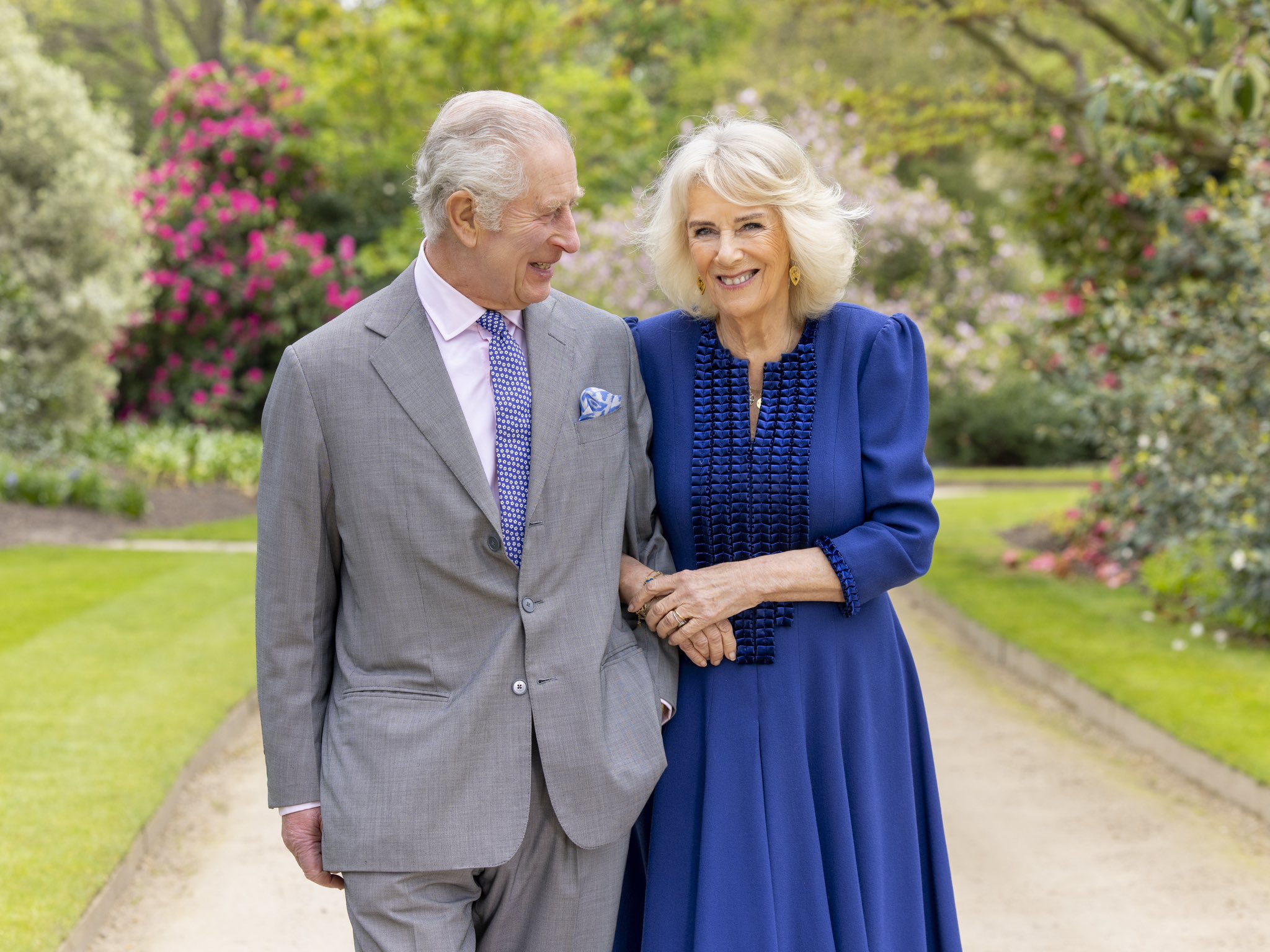
King Charles set to return to public duties following cancer treatment plus new photo
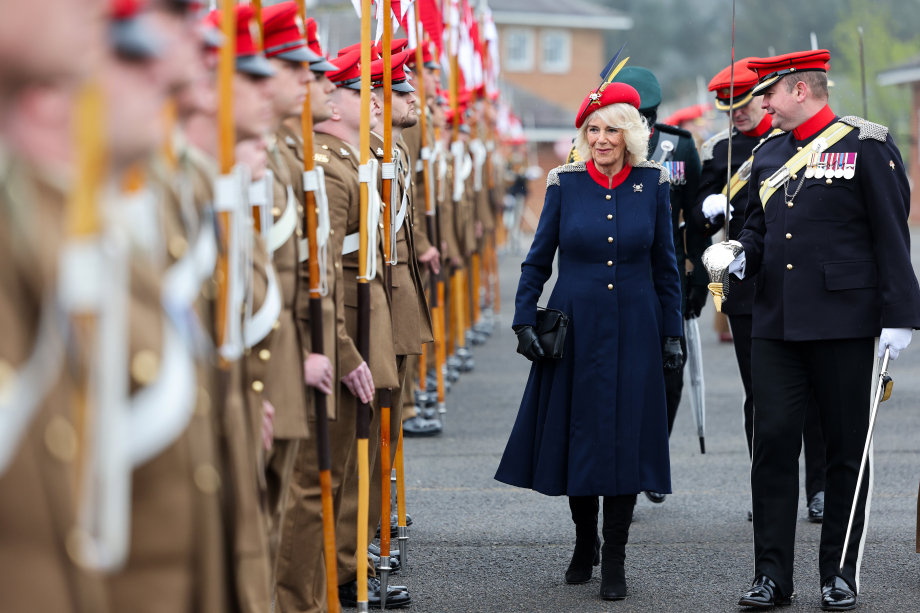
Camilla remembers her father during visit to Royal Lancers
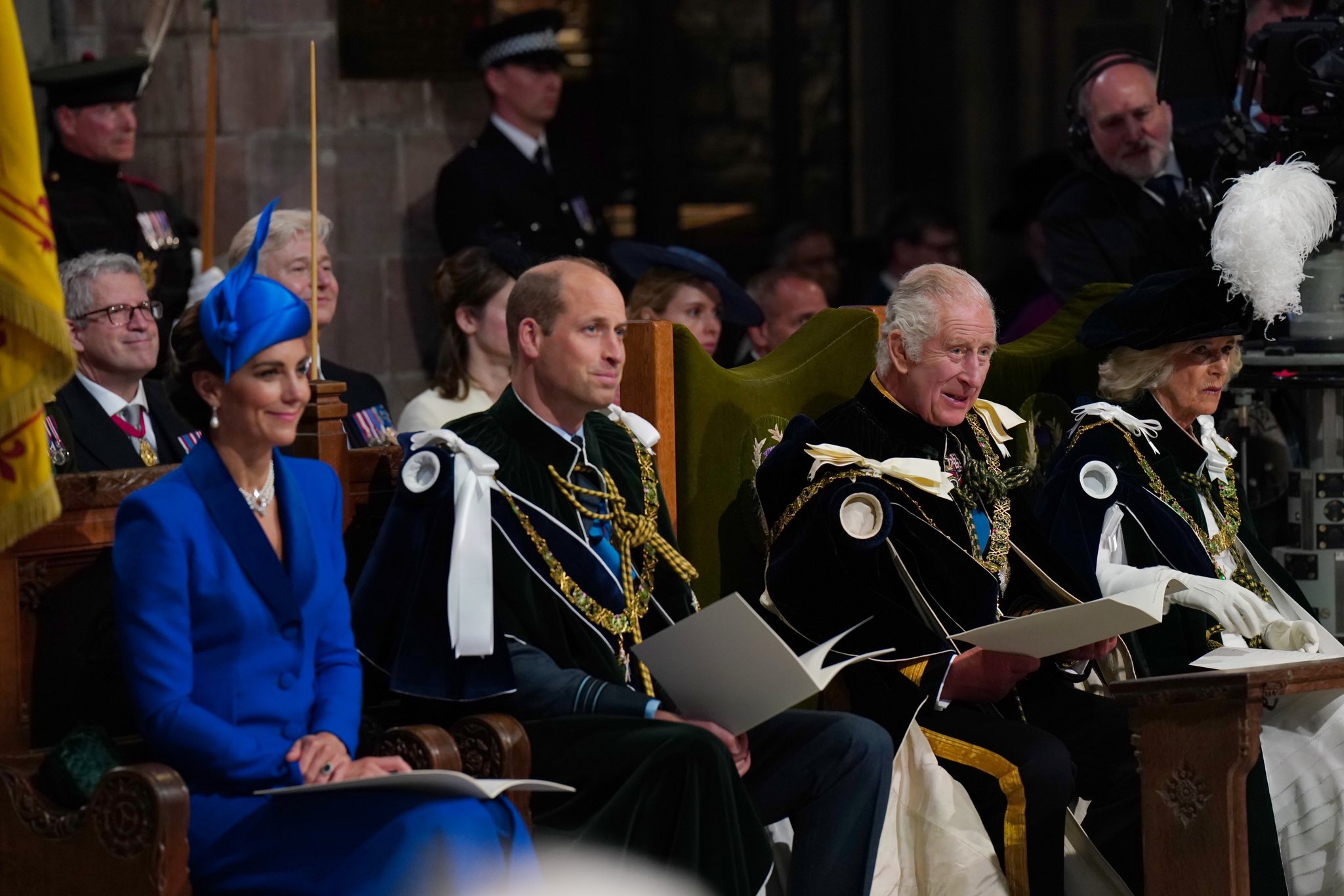
King Charles makes royal appointments on St George’s Day
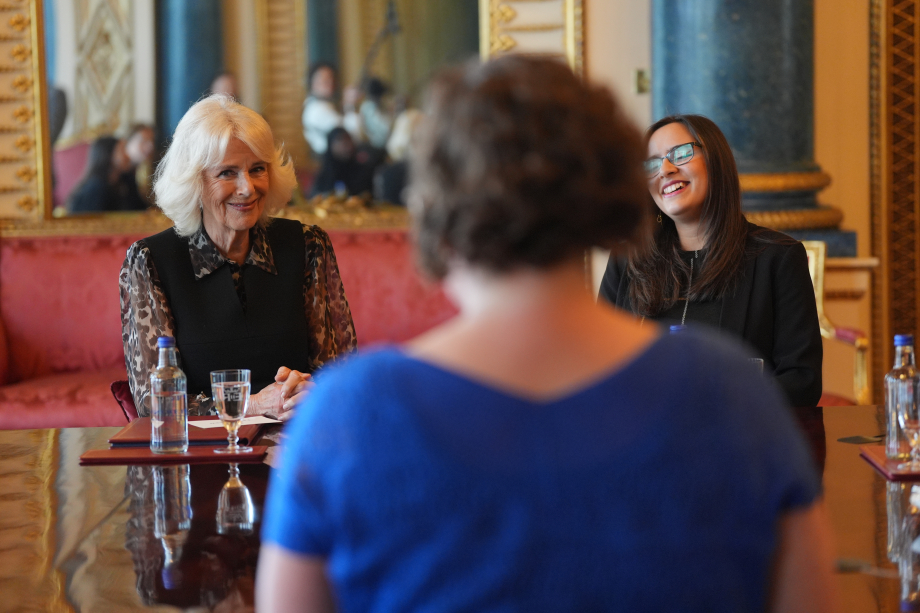
Queen Camilla welcomes SafeLives supporters to Buckingham Palace
Popular across the site....
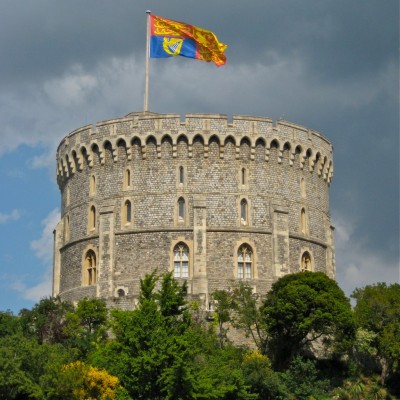
10 unusual royal rules and traditions of the British Monarchy
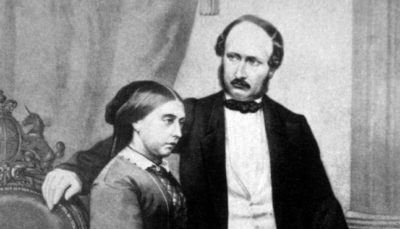
Queen Victoria and Prince Albert: a royal love story
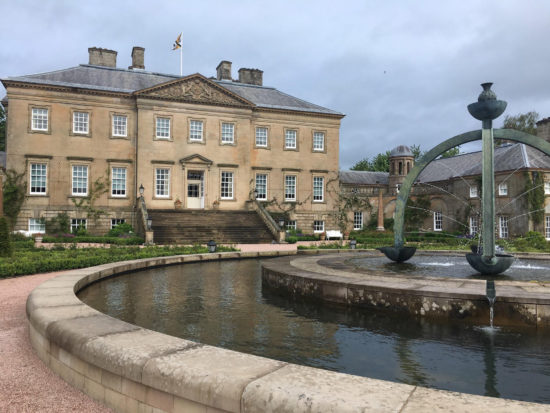
Saved for the nation: Dumfries House
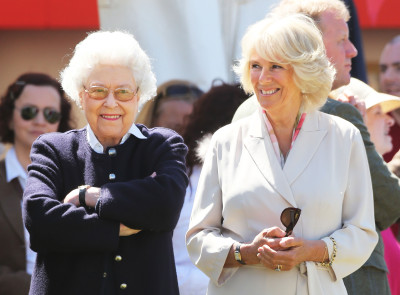
Camilla – an asset to The Queen & Crown
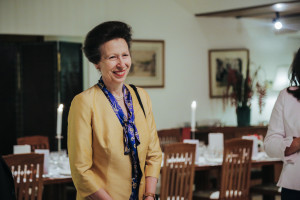
Princess Anne: the Royal Family’s hidden gem
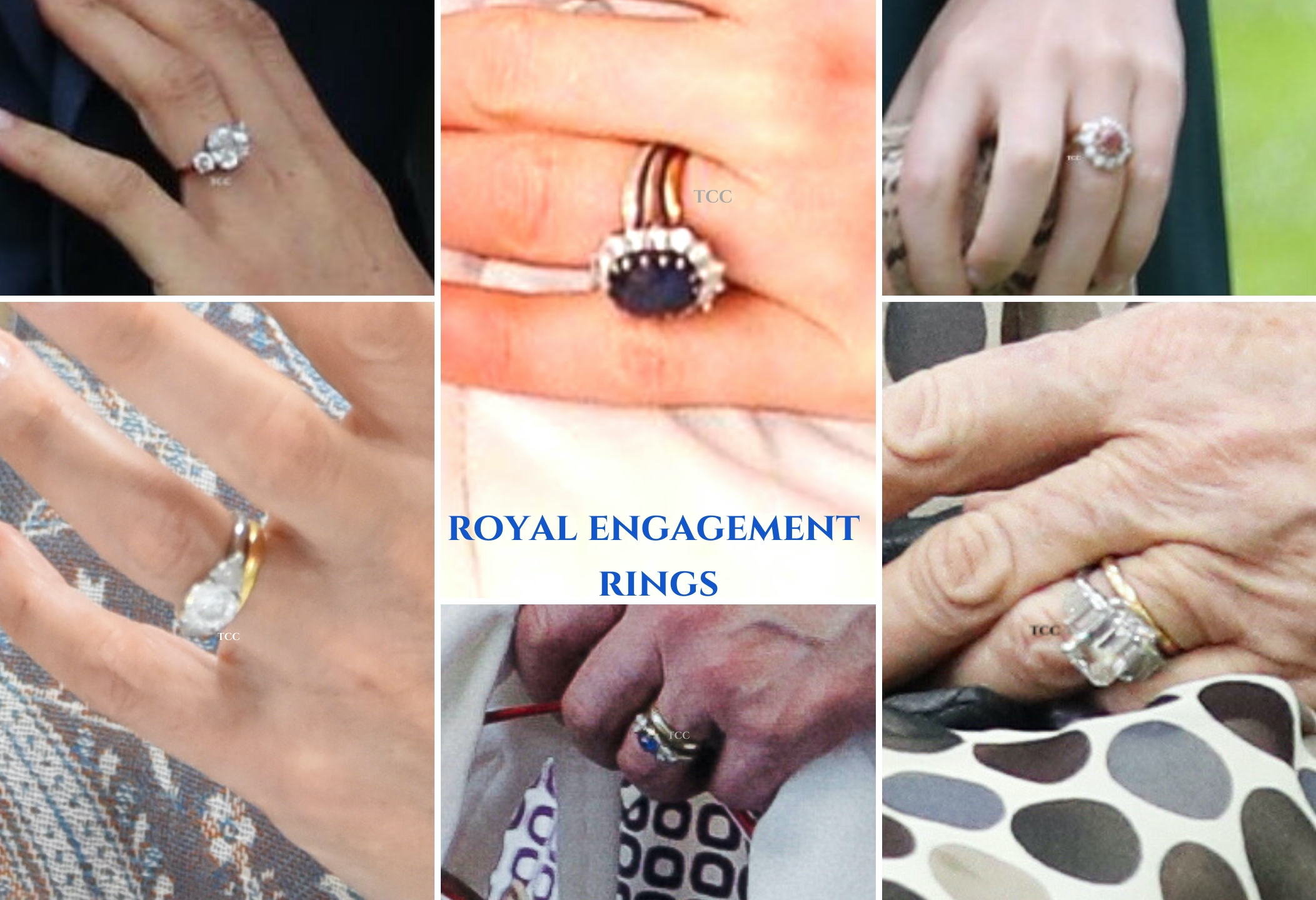
Royal engagement rings, from Queen Mother to Princess Beatrice
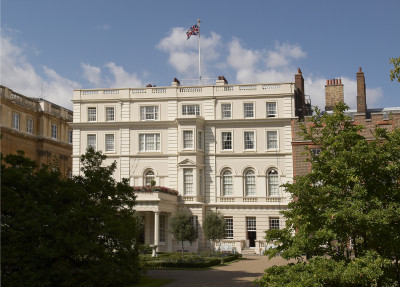
Look inside Clarence House – the home of Prince Charles & Camilla
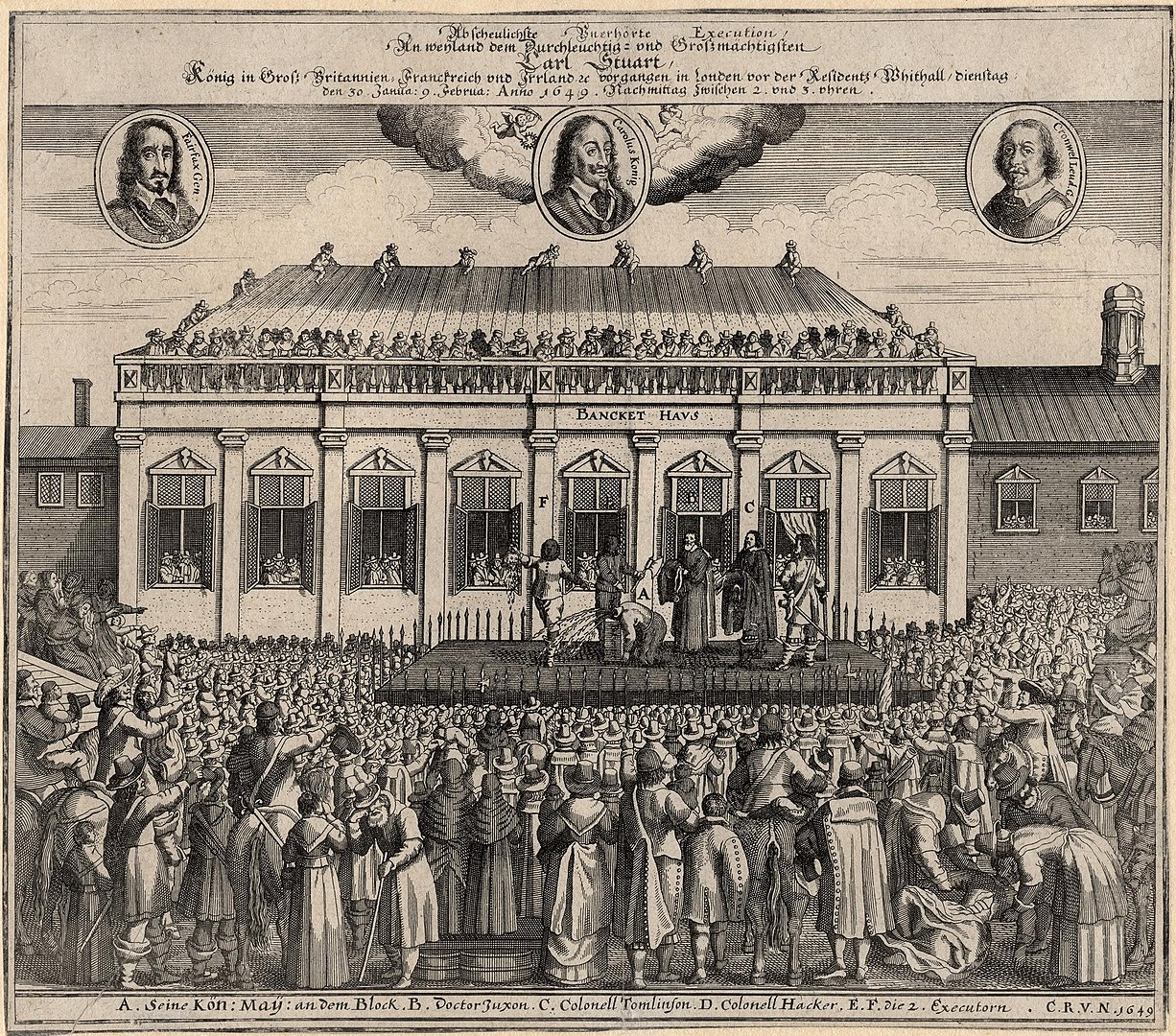
Royal Rewind: the trial and execution of Charles I in 1649
- The Minister
- Marriage Schedules
- Life Events
- HQ PAST-PORT Explorer
- Messy Church & Muddy Church Events
- The Monks’ Garden
- Youth Organisations
- Girlguiding
- What’s on at The Abbey
- Abbey Galleries
- Abbey on Film
- The Lost Tomb
- The Tiffany Window
- Directions to the Abbey
- The New Abbey Church
- Robert the Bruce
- Coat of Arms
- Office Bearers Since 1900
Dunfermline Abbey
Visit the abbey.
Dunfermline Abbey sits at the heart of Dunfermline, Scotland’s ancient capital. Dunfermline lies thirty minutes from the centre of Edinburgh, across the spectacular Forth Bridges. Dunfermline`s royal and monastic past dominates a town whose lifeblood is history. Dunfermline Abbey is the final resting place of King Robert the Bruce and the post-Iona burial site of the Kings and Queens of Scotland.
Dunfermline Abbey Dunfermline KY12 7PE Scotland. Tel: +44 (0)1383 723005
Email us at [email protected]
The tomb of King Robert the Bruce and many other royal and historical associations attracts tens of thousands of visitors each year. Many more join us for worship at our Sunday services, or midweek prayers.
Each year approximately 30,000 to 35,000 visitors make their way into the Abbey Church to visit, amongst other things, the tomb of Robert the Bruce
The Abbey Church of Dunfermline is currently closed to visitors for the winter. It will open again in 2020, every day from April to late October between 10am to 4.30pm, Monday to Saturday and from 2.30 to 4.30 on a Sunday. Entry to the Abbey Church is always free but donations to the upkeep of the building are always welcome.
Approaching from the south and west the Abbey is easily picked out in the skyline but traffic systems in Dunfermline City Centre do not make it too easy to reach. Follow our directions to easily find your way to the Abbey.
Share this:
The abbey church, useful links.
- Support the Abbey
- Safeguarding
- Privacy Policy
latest News
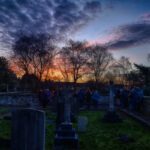
Easter Sunday 2024
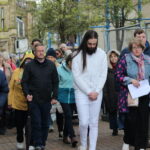
Walk of Witness

Dunfermline Abbey Visitor Guide
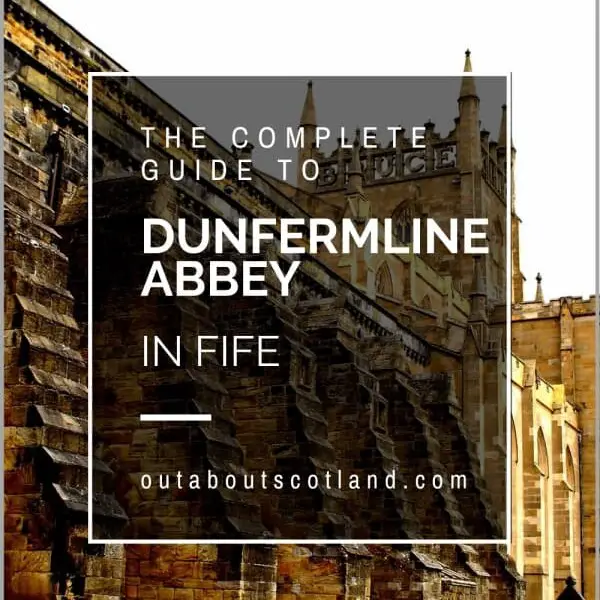
From its humble beginnings as a priory, Dunfermline Abbey in Fife rose to prominence as the final resting place of Scottish royalty, including the legendary King Robert the Bruce. Today, its imposing architecture stands as a testament to the skill and artistry of the craftsmen who dedicated their lives to its creation.
Discover the impressive stained glass windows that adorn the abbey, marvel at the intricate details of the stone carvings, and step into the hallowed halls where kings and queens were crowned in this complete guide to Dunfermline Abbey.
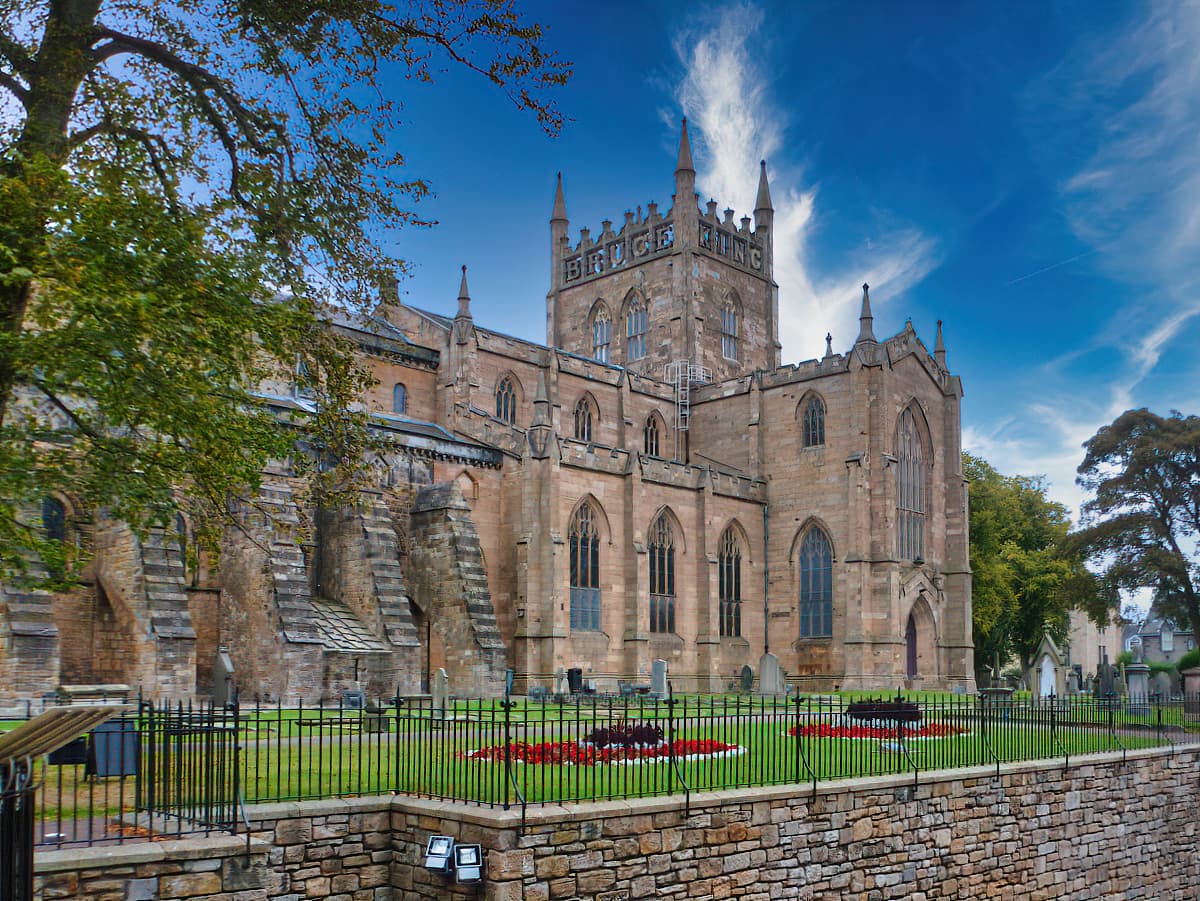
Dunfermline Abbey is a striking historical site in Fife that has foundations that date back to the 11th century and is notable for being the burial place of several Scottish monarchs, including Robert the Bruce. The Abbey and its adjacent palace ruins, maintained by Historic Environment Scotland, offer a fascinating glimpse into Scotland’s mediaeval past.
Dunfermline Abbey is a historic site that has a history stretching back almost as far as the history of Scotland itself. It’s at this 900-year-old abbey where many of Scotland’s greatest kings and queens were laid to rest, with prominent figures including Saint Margaret (wife of Malcolm III) and Robert the Bruce buried beneath the abbey grounds.
But it’s not just the inhabitants of the mausoleum that attract thousands of visitors each year, because this historic building is also renowned for its stunning architecture.
What started as a small priory in 1070 AD eventually became the grandest abbey in Scotland thanks to a continuous programme of improvements that began all the way back in the 12th century. Over the years, Dunfermline Abbey transitioned from a minor church into the magnificent structure we see today, thanks to King David I, who modelled it after the similarly impressive Durham Cathedral.
The massive Romanesque pillars inside the nave and the enormous buttresses encircling the exterior continue to astound visitors even today, and the abbey is now one of the most-visited attractions in the region.
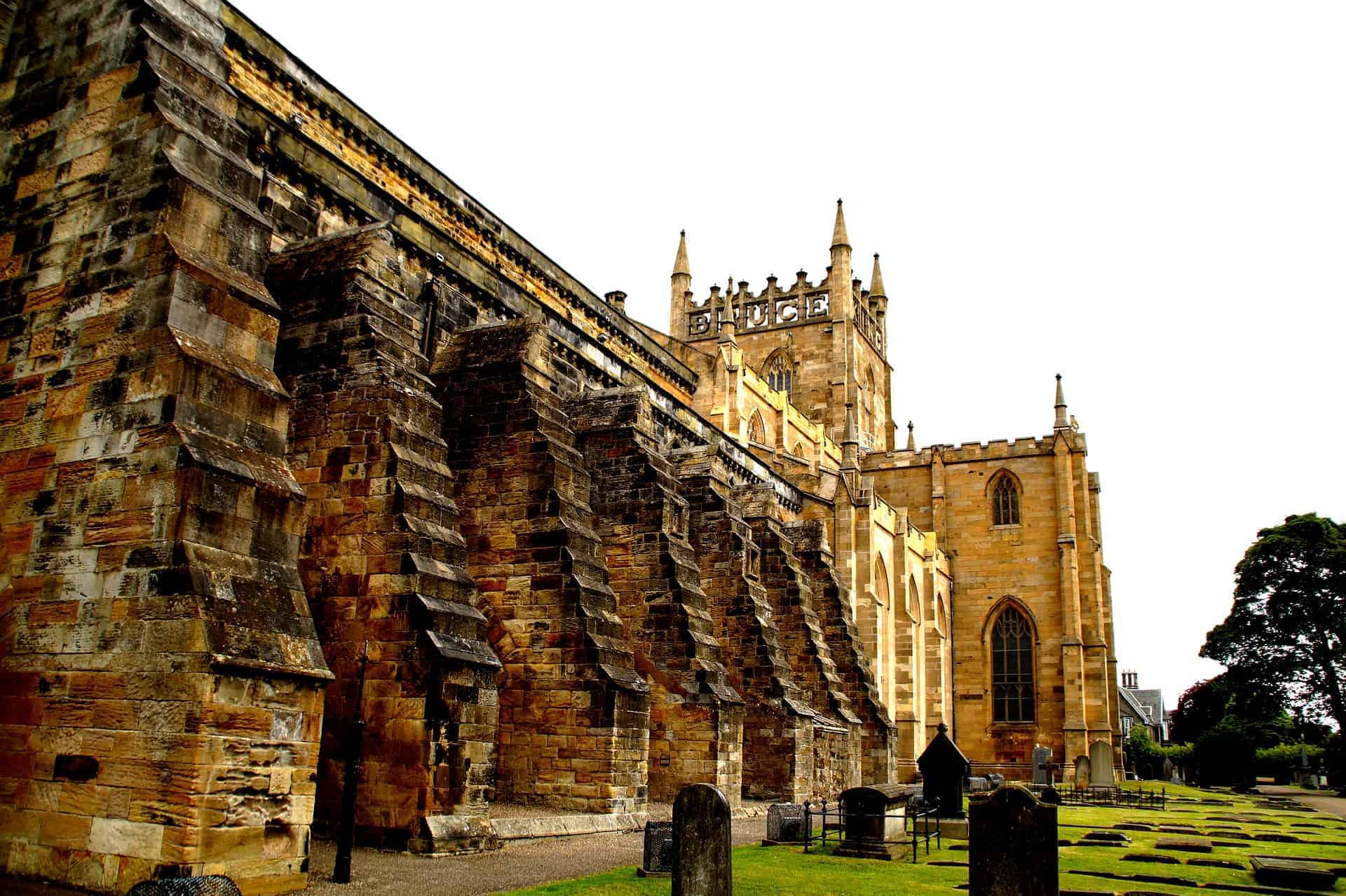
The Highlights
1: Dunfermline Abbey holds immense historical significance as the resting place of many Scottish monarchs, including Robert the Bruce. Visitors can explore the majestic royal tombs and gain insights into the lives and legacies of these influential figures.
2: The abbey’s architecture is a sight to behold. From the intricate stone carvings to the soaring Gothic arches, every corner of Dunfermline Abbey showcases the exquisite craftsmanship of its builders. One of the main highlights is the abbey’s stunning stained glass windows, which create a serene and ethereal atmosphere on a sunny day.
3: Set amidst beautifully landscaped gardens and parkland, Dunfermline Abbey offers a peaceful retreat from the bustling shops of High Street, yet it’s just a 5-minute walk from the city centre.
Visiting Tips
1: There aren’t any toilets in the cathedral, but there are lots of cafés with toilets on High Street as well as in nearby Pittencrief Park.
2: Dunfermline is a nice enough town, but after visiting the abbey, I recommend driving west on the A985 to explore the historic village of Culross instead. This attractive village is a tourist attraction in its own right and takes just 15 minutes to reach by car.
3: If you’d rather stretch your legs in Dunfermline you’ll find Pittencrieff Park nearby, which features a pavillion, a play park, landscaped gardens, and a cafe.
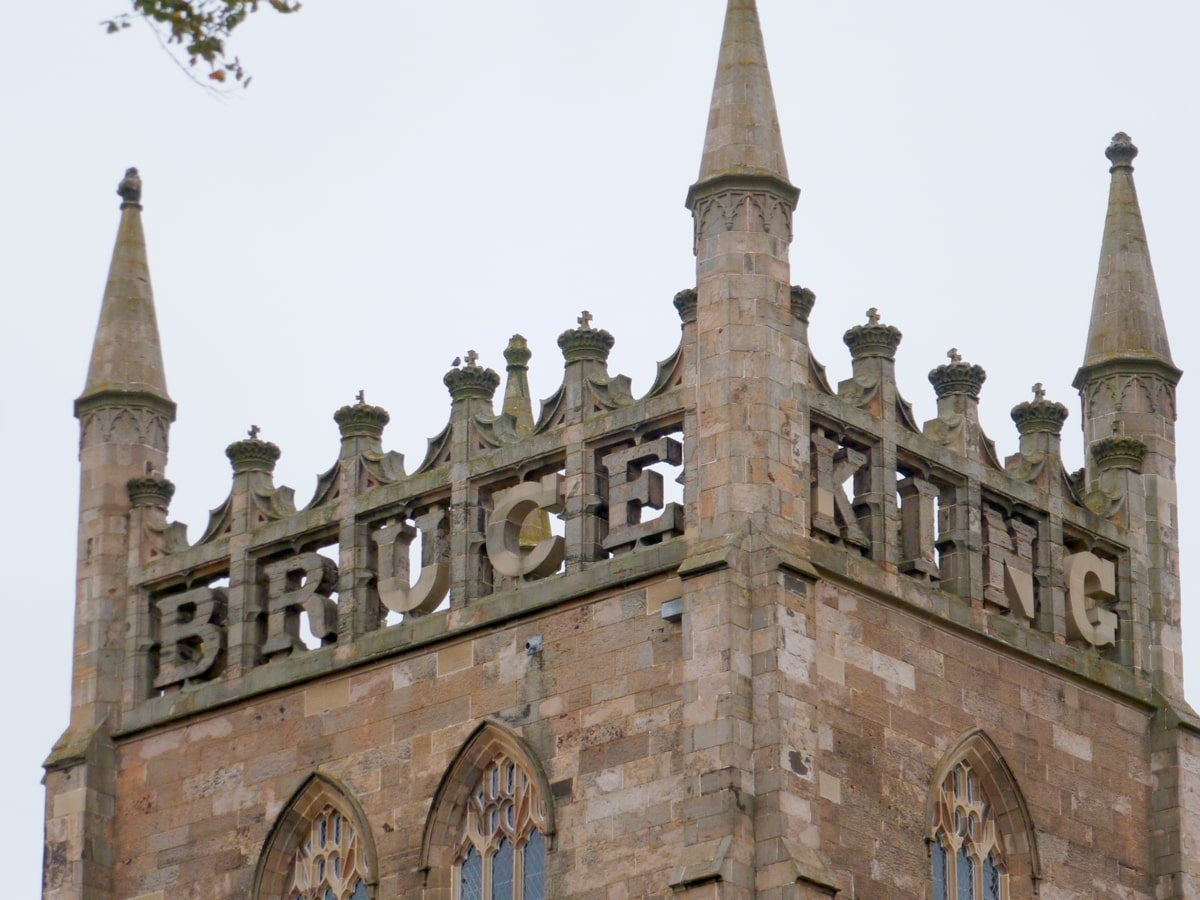
Tourist Information
The grounds surrounding the abbey are enormous and are home to a vast collection of tombs and gravestones, making them the best place to begin a tour of the site. After wandering around the graveyard, I recommend entering the nave to look up and gaze at the pillars and columns that tower overhead.
It’s amazing how mediaeval stonemasons managed to create such monumental buildings back in the day, especially Dunfermline Abbey, which still manages to impress visitors 900 years after its foundation stones were first laid.
More than 30,000 tourists visit this historical site each year, most of whom make a point of seeing the bronze floor plaque marking the location of Robert the Bruce as well as the elaborate shrine of St. Margaret which is located at the east end of the nave. Leaving the nave, you can head towards the gatehouse where you’ll see the ruins of the old monk’s refectory, while the nearby 76-acre Pittencrieff Park can be easily visited through a gate at the western end of the cathedral.
The park is well worth taking the time to visit as it has several attractions including a museum, a pavilion, and a peacock sanctuary. Entry to the park is free and the park is open year-round.
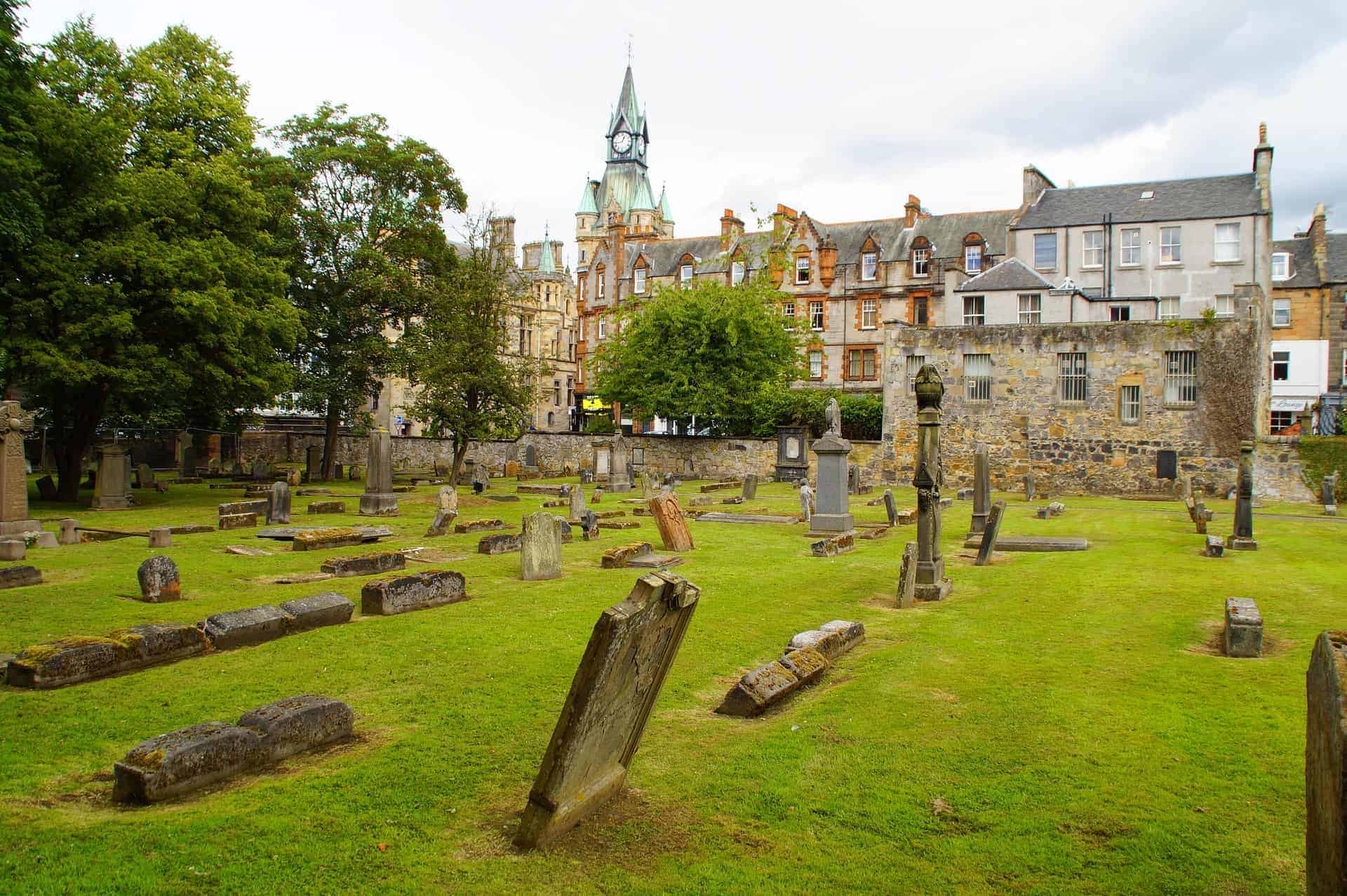
The priory that Malcolm III founded in the 12th century served as Dunfermline’s first place of worship, and it’s on top of this modest church that the present-day Dunfermline Abbey was built. It was actually Malcolm’s wife, Margaret, who introduced Benedictine monks to Dunfermline Priory, and after her death, her son, David I, began work to build a magnificent abbey that would rival any other in Scotland.
In 1250, the remains of Margaret (later to become Saint Margaret) were moved to a shrine at the eastern end of the abbey, which led to Dunfermline becoming the primary site for royal burials in later years.
Perhaps even more famous than Saint Margaret’s tomb is that of Robert the Bruce, who was interred there in 1329. King Robert had close ties to the abbey as he had personally overseen its reconstruction after it was damaged by Edward I during the Scottish Wars of Independence.
Unfortunately, the abbey was ransacked and almost destroyed during the Scottish Reformation in 1560, but thankfully, the nave was left unharmed. Although Dunfermline Abbey lost its status as a site of royal burials shortly after the Reformation (Iona Abbey was used instead), the nave continued to be used as a parish church right up to the present day.
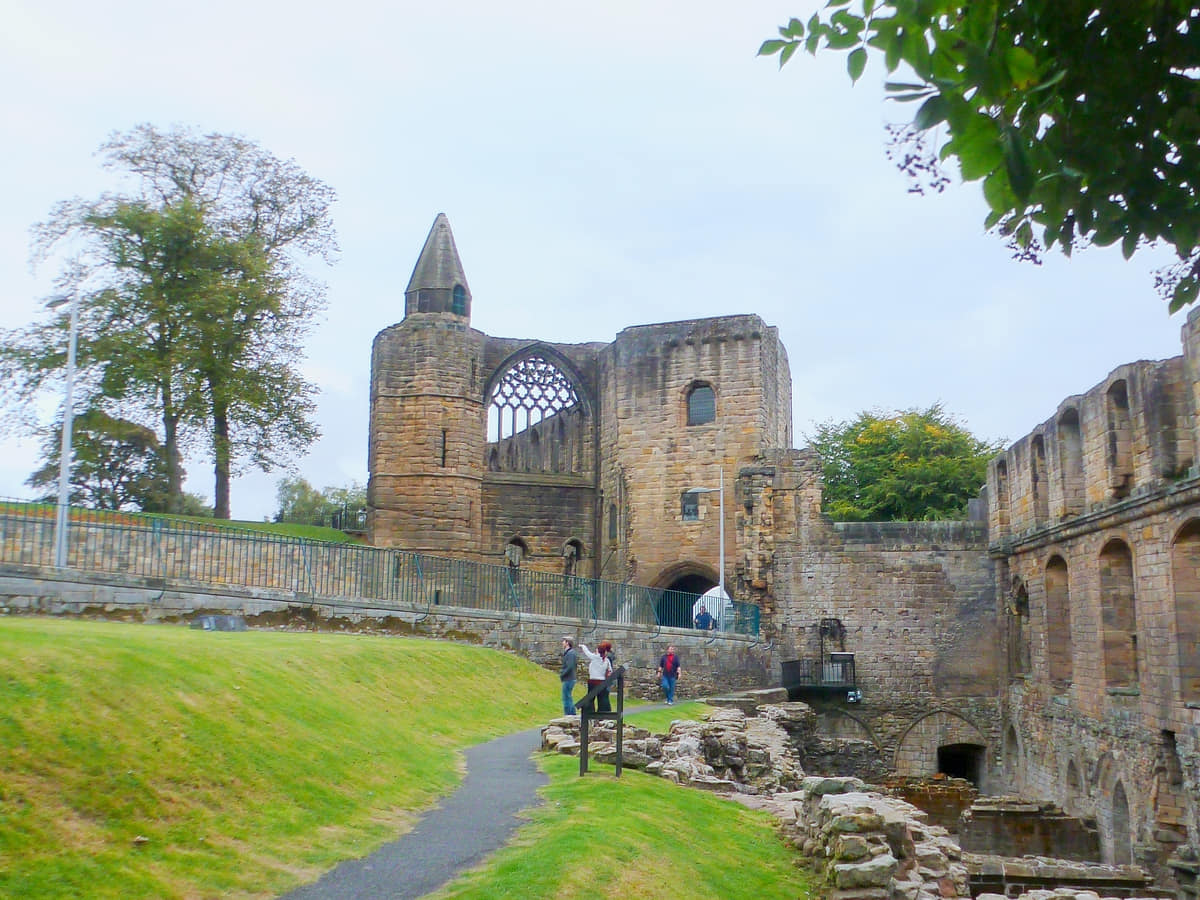
Things to Do
Visit the Abbey : The Abbey is an architectural marvel with parts dating back to the 12th century. Home to the tomb of Robert the Bruce, Scotland’s famous king, it’s a must-visit for anyone with an interest in history.
Explore the Abbey Nave. The Abbey Nave is a beautiful example of Romanesque architecture. Marvel at the detailed stone carvings, the towering pillars, and the beautiful stained glass windows. The Nave is also home to a collection of mediaeval grave slabs and historical artefacts.
Explore Dunfermline Palace : Discover the rich history of Scotland by exploring Dunfermline Palace, a former royal residence that’s part of the Dunfermline Abbey complex. Walk through the ruined halls and rooms and learn about the lives of the nobility that once called it home.
Walk through the Historic Grounds : The area surrounding Dunfermline Abbey is filled with beautiful gardens and parks. Pittencrieff Park is well worth a visit, as it features lots of footpaths, greenhouses, a pavilion, a cafe, and a children’s play park.
Visit the Church : The parish church is part of the abbey complex and is open to visitors to explore as part of a self-guided tour, though visitors should note that it’s still an active place of worship so access might not be possible on certain days.
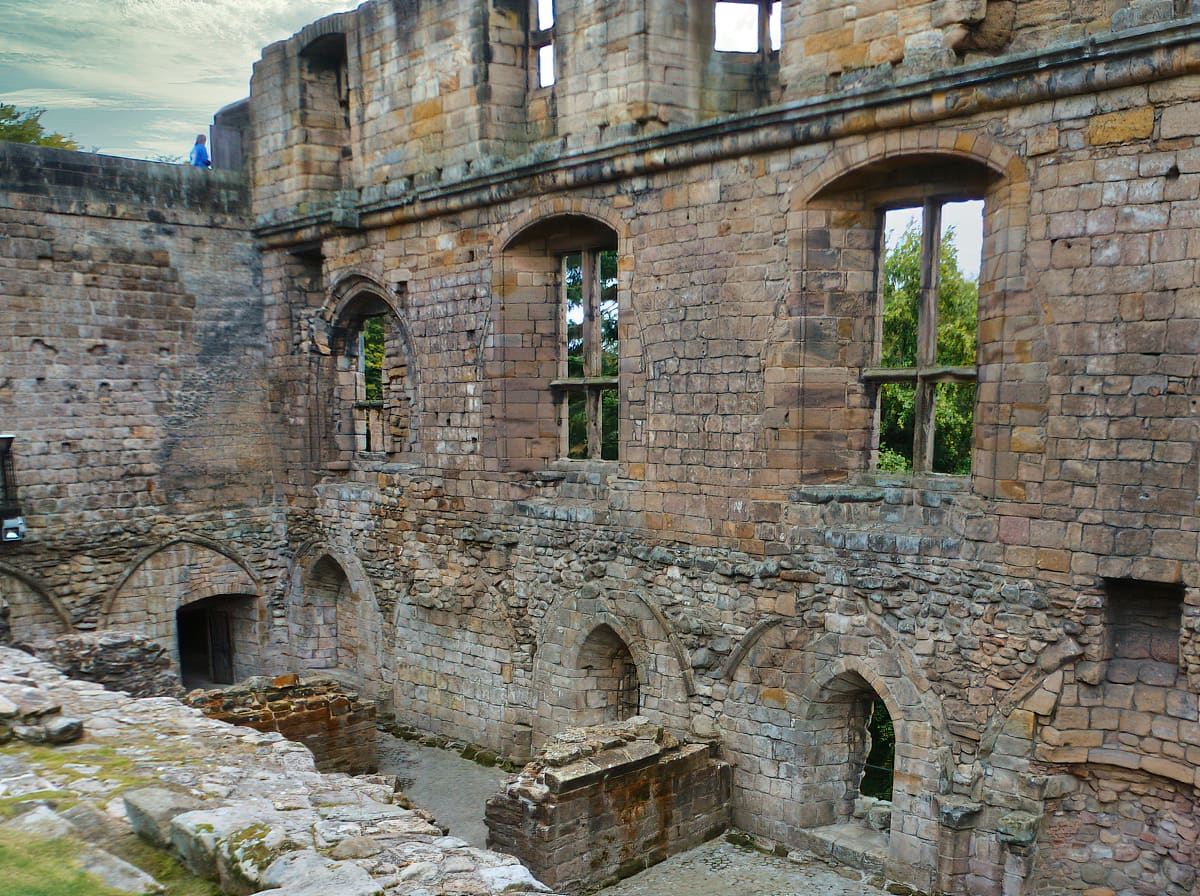
Things to Do Nearby
Pittencrieff Park . Pittencrieff St., Dunfermline, KY12 8QH. 1-minute walk. An extensive public park with a spiderweb of footpaths through managed lawns and coppices. The park includes children’s play areas, a pavilion, several memorials, a peacock sanctuary, and more.
Dunfermline . 2-minute walk. Historic Dunfermline offers several local shops, cafés, pubs, and restaurants on its high street, which is an easily accessible walk from the abbey.
Andrew Carnegie Birthplace Museum . Moodie St., Dunfermline, KY12 7PL, is a 4-minute walk. A museum is dedicated to the entrepreneur Andrew Carnegie, who was born in Dunfermline but later moved to America to become the world’s richest man. The museum features original artefacts as well as displays of 19th-century life in Dunfermline.
Abbot House, 11 Maygate, Dunfermline, KY12 7NE, is a 2-minute walk. A local centre for Dunfermline history and heritage. This historic building aims to preserve the story of the town and its people with a collection of archives, exhibits, and displays. There is a café and a microbrewery on-site.
Pittencrieff Glasshouse, Dunfermline, KY12 8QH, is a 2-minute walk. A large, refurbished glasshouse that is over 200 feet long. The glasshouse contains a variety of exotic plant species from across the globe. The front of the glasshouse features ornamental gardens and flower borders.
Frequently Asked Questions
Is dunfermline abbey worth visiting.
Dunfermline Abbey is definitely worth visiting, especially if you have an interest in history and architecture. Located in Dunfermline, Fife, the abbey contains more than 900 years of history and is considered one of the most historically significant sites in Scotland.
The abbey is renowned for its beautiful stained-glass windows and the grounds of the abbey are equally remarkable, featuring beautiful gardens and a historic graveyard that’s the final resting place for many Scottish nobles.
What is Dunfermline Abbey famous for?
Dunfermline Abbey in Fife is famous for being the grave site of several of Scotland’s kings and queens, including Robert the Bruce, St. Margaret, David I, and Robert I. Dunfermline Abbey has more royal graves than anywhere else in Scotland, except for Iona Abbey.
Is Dunfermline Abbey free?
The abbey and nave are open to visitors free of charge. Visit the Historic Environment Scotland website for the current opening times.
When was Dunfermline Abbey destroyed?
During the Wars of Independence in AD 1303, English troops partially destroyed Dunfermline Abbey. Protestants also sacked it in 1560, after which it fell into ruin.
Related Posts
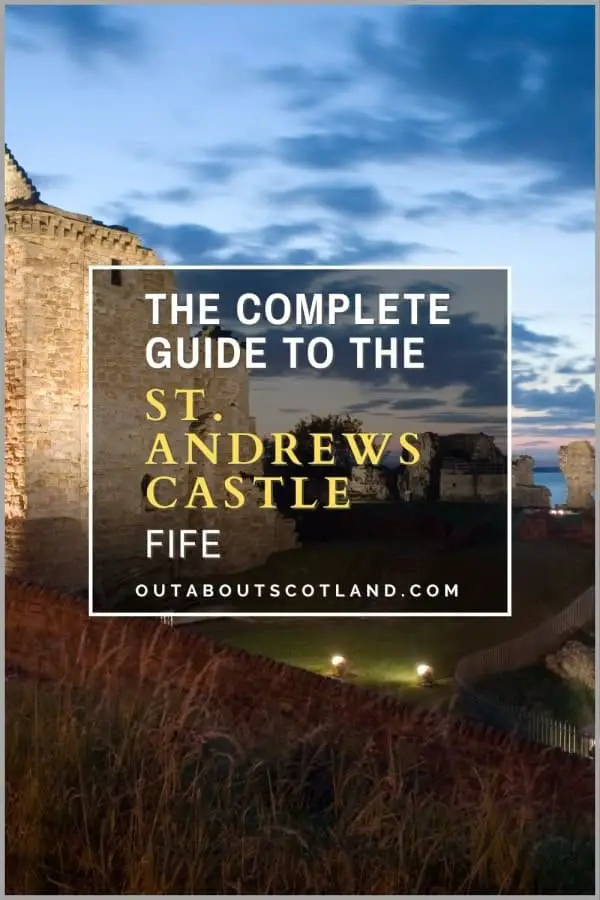
St. Andrews Castle Visitor Guide

The Best Things to Do in Fife for Families
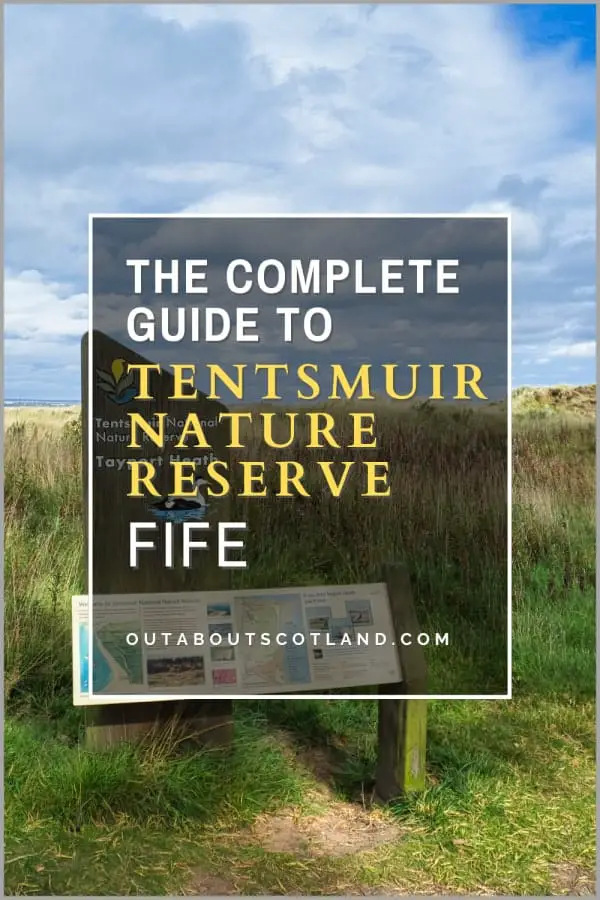
Tentsmuir Nature Reserve Visitor Guide

East Neuk of Fife Visitor Guide
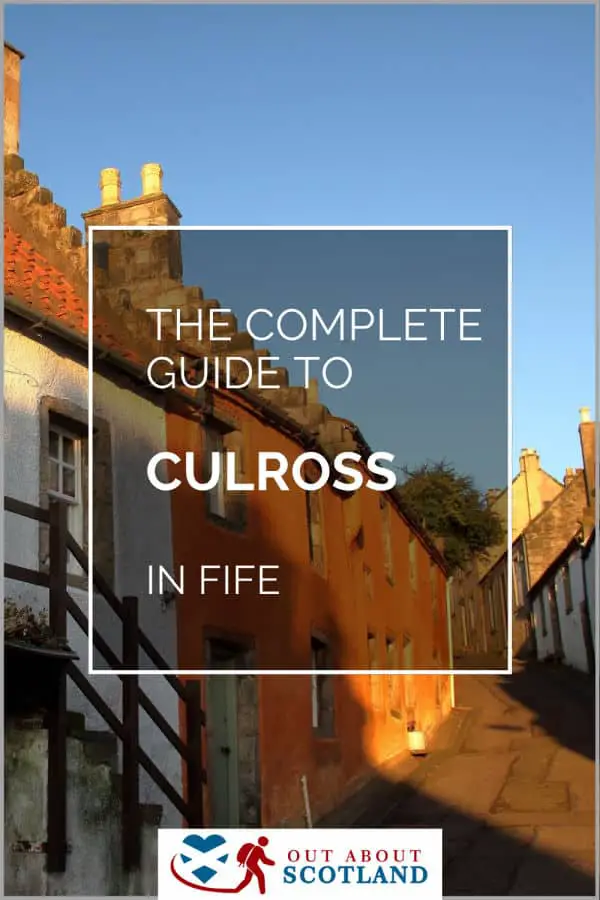
Culross Visitor Guide
Craig Neil is the author, photographer, admin, and pretty much everything else behind Out About Scotland. He lives near Edinburgh and spends his free time exploring Scotland and writing about his experiences. Follow him on Pinterest , Facebook , and YouTube .
Select a ticket option
- Standard Admission, Member & Explorer Pass Tickets
- Partner Organisation Tickets
- Save with an Explorer Pass
- Buy Membership
Dunfermline Abbey and Palace
St Margaret’s Street, Dunfermline, Fife, KY12 7PE
- 01383 739 026
Important notice
Dunfermline Abbey has a special place in the nation’s heart. Laid to rest here are some of Scotland’s great kings and queens – including Robert the Bruce. The abbey’s great nave is also the most visually stunning example of Romanesque architecture in Scotland.
Dunfermline’s story stretches back to the 11th century – the time of Malcolm III and his queen, Margaret. Their son, David I, raised the status of the little priory to abbey in the 12th century. He endowed it richly, and brought stonemasons from Durham Cathedral to build it.
The abbey church is famous as the mausoleum of:
- Margaret (later canonised as St Margaret)
Late on in its history, the abbey guesthouse range became a royal palace, along with some additional buildings. The ill-fated Charles I was born here in 1600.
From priory to abbey
In 1070, Margaret founded a priory in Dunfermline on the site where she had married Malcolm III. She introduced a small community of Benedictine monks from Canterbury, and so laid the foundations of the first Benedictine house in Scotland.
David I made the priory an abbey in 1128. He had a new church built on a grand scale, of which the magnificent nave survives. The Romanesque pillars are similar to those of Durham Cathedral, and it’s likely that the same masons carved them.
In 1250, St Margaret’s remains were moved to an elaborate shrine at the east end of the church. A 19th-century parish church (Abbey Church) now stands on the site of the choir and presbytery. This is the location of the tomb of Robert I and the other royals buried here. It is home to an active Church of Scotland congregation.
For opening times of the Abbey Church (not in the care of HES) please visit dunfermlineabbey.co.uk .
The Bruce at Dunfermline
After Edward I badly damaged Dunfermline Abbey in 1303, Robert I financed its rebuilding. It was a move that showed confidence in the affluence and self-reliance of his kingdom following the Wars of Independence with England.
The most impressive of the new buildings was the monks’ refectory, a soaring structure with an elaborate façade, which took full advantage of the sloping site.
Robert I was interred before the high altar in 1329. His heart was taken on crusade before eventually being buried at Melrose Abbey .
The Reformed Church at Dunfermline
After the Protestant Reformation in 1560, the:
- nave was converted into a parish kirk for the people of Dunfermline
- old choir was allowed to collapse
The state assumed responsibility for the care of the nave after the new parish church was built on the site of the choir between 1818 and 1821.
Dunfermline Palace
Medieval abbeys typically had several grades of accommodation, and it’s likely that the guesthouse was a royal residence right from the start.
After the Reformation, a new palace was created out of the guesthouse and the west range of the abbey. Dunfermline Palace became the personal residence of James VI’s queen, Anna of Denmark.
The future Charles I was born here in 1600, the last monarch to be born in Scotland. Royal interest in Dunfermline waned when James and Anna left for London in 1603, and the palace fell into disrepair.
Opening times
29 Mar to 30 Sept: Mon to Sat, 10am to 4.30pm; Sun, 1pm to 4.30pm (last entry 4pm). 1 Oct to 28 Mar: Daily except Sun and Mon, 10am to 4pm (last entry 3.30pm). Please refer to dunfermlineabbey.co.uk for information about services in the Abbey Church which may affect access to the tomb of Robert the Bruce and the Tiffany Window.
Dunfermline Abbey Statement of Significance
Dunfermline abbey on scran.
Browse images on our online learning resource.
Dunfermline Abbey on Canmore
Read detailed information on our online catalogue of Scotland's heritage.
- Places nearby
- You might also like
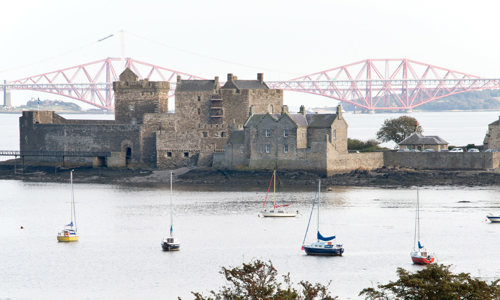
Find out more
Blackness castle.
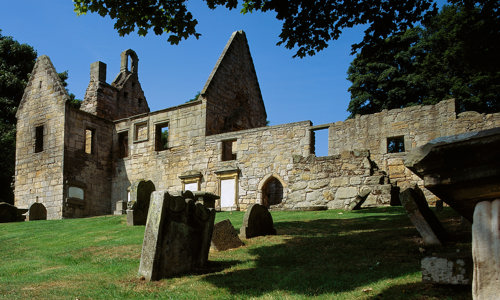
St Bridget's Kirk
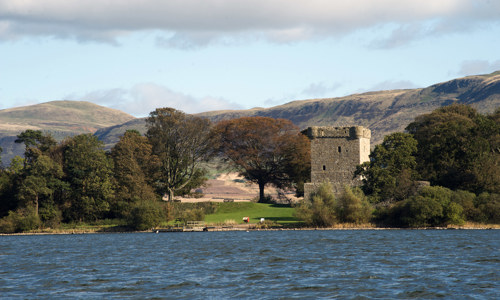
Lochleven Castle
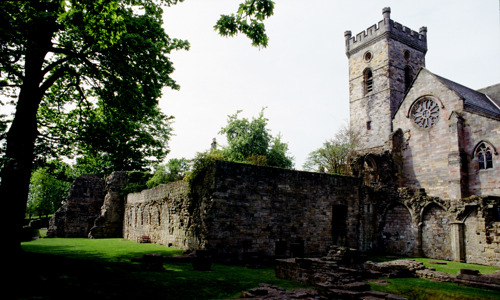
Culross Abbey
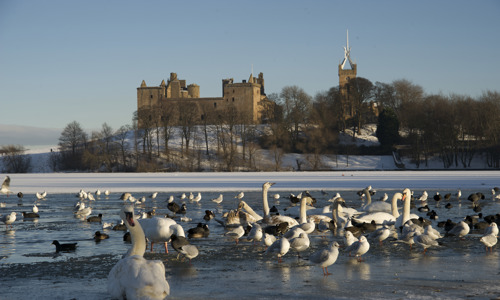
Linlithgow Palace
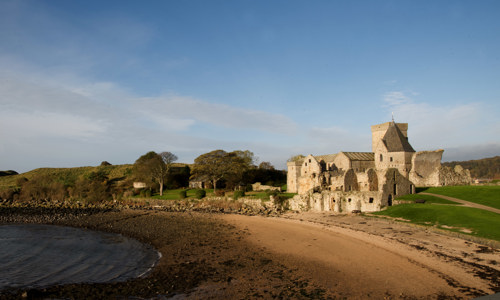
Inchcolm Abbey
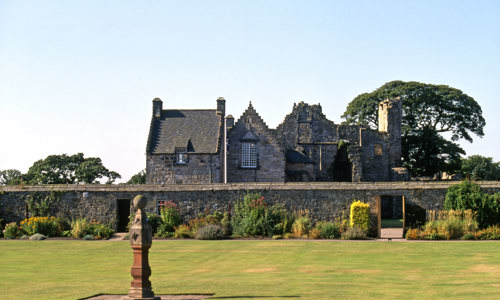
Aberdour Castle and Gardens
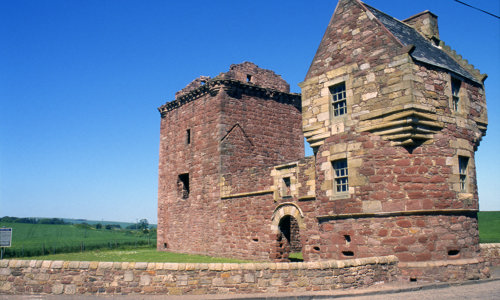
Burleigh Castle
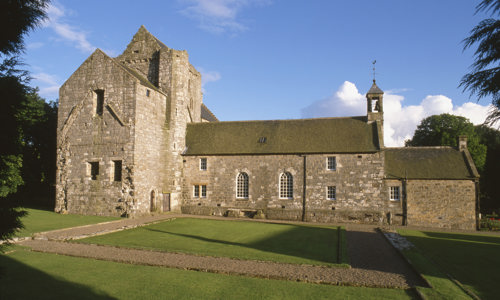
Torphichen Preceptory
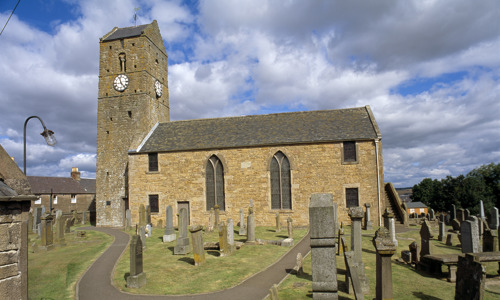
St Serf's Church and Dupplin Cross
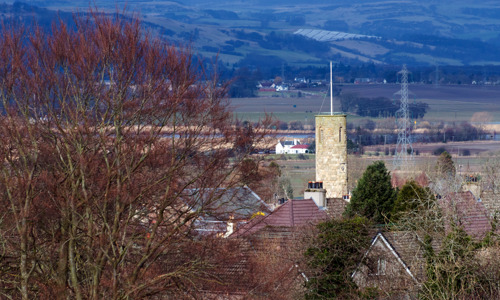

Abernethy Round Tower
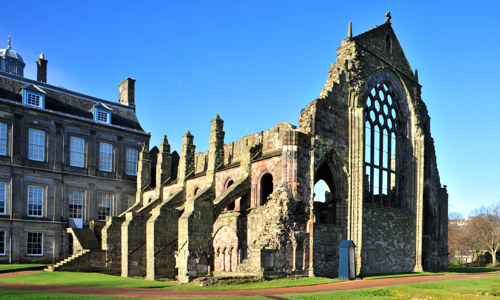
Holyrood Abbey
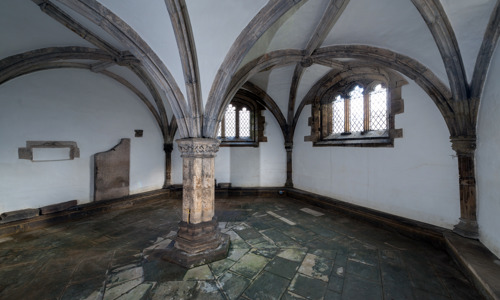
St Triduana's Chapel, Restalrig Collegiate Church
Download our visitor app.
Discover more on the go – the Historic Scotland app lets you find out about Scotland’s most iconic places wherever you are.
Plan your visit
More than 20 of our sites are now open. Please book your tickets in advance.
Become a member
Join Historic Scotland to visit our properties free of charge for a full year and support our work at the same time.
Hire a site for filming
Use one of our fantastic locations on your next shoot for an awe-inspiring backdrop to your work.
Learning visits
Our 300+ historic places serve as creative inspiration for all sorts of learning activities – and for learners of all ages.
Search our events
See the past brought to life by the imaginative year-round programme of events at our properties.
- Scottish Palaces
Dunfermline Palace & Abbey
Sitting pretty on Margaret Street in Fife is Dunfermline Abbey and Palace, where beauty and history collide. People come to admire the crumbling, ancient walls of the original castle, as well as the dappled sunlight filtering through the colourful mosaic of stained glass windows.
History buffs will revel in the historic environment of the abbey church, filled to the brim as it is with royal ancestry and remains. And if you love architecture, look no further than the impressive medieval interiors of Queen Margaret’s church. Whether you swing by the south wall or linger by the abbey ruins, there is no wrong way to spend an afternoon or morning perusing this piece of Scottish history.
In This Post
Dunfermline Abbey History
The fascinating history of Dunfermline Abbey and church stretches back to the 11th century when it was just a quaint priory founded by Queen Margaret in 1070 AD. It was erected on the picturesque piece of land where she married Malcolm III. Benedictine monks were brought over to initiate a small community and, coincidentally, the first Benedictine house in the country.
David I, the son of Malcolm III and Queen Margaret (also known as St. Margaret), felt the priory deserved more grandeur and set about turning it into a gorgeous spectacle of architecture. In 1128, he began his project, calling in stonemasons from Durham Cathedral to bring his vision to life. That vision included the famous Dunfermline Abbey nave, which still stands in all of its glory today.
In 1303, Dunfermline Abbey was damaged rather severely by Edward I, but after the Wars of Independence, King Robert (also known as Robert the Bruce) financed its restoration and included some new buildings. His remains were buried on the Abbey’s grounds, along with other royal persons such as Queen Margaret and David I.
A century or two later, the abbey nave was converted to a parish church or kirk for the Dunfermline peoples after the Protestant Reformation in 1560, and the old choir section was left to dereliction and finally collapsed.
These days Dunfermline Abbey is not only a gorgeous historical landmark in Scotland but also an active parish church called Dunfermline Abbey Church. It was established in the 19th century, where the old choir once stood.
Dunfermline Abbey and Palace: Things to Remember
If you’re heading to the abbey, it’s best to take note of these important factors.
Dunfermline Abbey and Palace Opening Times
There are two seasonal sets of operating hours to view the ruins, church, and palace during your visit. From May to the end of September, the abbey is open from 9:30 am to 5:30 pm from Monday to Saturday, and from 1 pm to 5 pm on Sundays. From October to March, the opening times adjust to 10 am to 4 pm, with the abbey closed on Sundays and Mondays. Last entry is 30 minutes before closing time.
Adult entry fees are £6 each, and children’s entry fees are £3.50 each. You can also purchase a family ticket for £20.
Accessibility
While the paths within the ground are accessible to all with a gravel surface, the kitchen, refectory floor, lower floor of the palace, and upper floor in the gatehouse are not accessible for visitors in wheelchairs.
Limitations
Children under the age of 16 must have an adult accompanying them. The site may also close for lunch from 12:30 pm to 1:30 pm and is closed from 25 December to 5 January. Any part of the site may be closed at short notice for weddings, funerals, and other events.
How to Get to Dunfermline Abbey and Palace
No matter which direction you’re coming from, here are the easiest ways to get to the abbey.
Ways to Get There by Car and/or Public Transportation
There are several ways to reach the abbey church, the first of which is by car. From the north, you’ll enter Dunfermline from the A823, and from the east, you’ll take the M90 and then follow the signs from Exit 3. You’ll enter the town via Queensferry Road, coming from the south and via the A985 from Kincardine from the west. Bear in mind that the abbey buildings don’t have a car park, so if you drive in, you’ll have to pay for parking in town.
If you prefer public transport, you can take a bus to Dunfermline and enjoy a 5-minute walk to the abbey buildings, or take one of the frequent trains from Edinburgh to Dunfermline Abbey and Palace. It’s only a 15-minute stroll from Dunfermline Town Railway Station. Otherwise, you can catch one of the many taxis there if your boots aren’t made for walking.
Attractions at Dunfermline Abbey, Fife
So what exactly is there to see at the Abbey, you might be wondering? Read on to find out more about the many glorious things to do at this Scottish landmark.
Visit the Royal Graveyard
The abbey is the final resting place for many a Scottish monarch – 18 royals and 7 kings were buried beneath its soils between 1093 and 1420. Its status as a royal mausoleum is set in stone, and who knows? Perhaps you’ll bump into a noble ghost while you’re reading the famous names on the tombstones and walking the neatly trimmed pathways.
See the Royal Palace
The Abbey was not only a priory and abbey church but a royal palace, too. Abbeys typically had several types of accommodation for various guests, but from the start, the guesthouse was most likely a royal residence. After the Scottish Reformation, the west range and guesthouse were officially converted into Dunfermline Palace and Anna of Denmark, wife to James VI, lived here. The elaborate feel alone is enough to convince you that the nobility spent plenty of time here.
Walk Through the Nave
This piece of the historical site is managed by Historic Environment Scotland. As you walk through the south west entrance, the 900-year-old pillars and columns of carved stones are awe-inspiring, eternally reaching for the sky. The stained glass windows shimmer their bold colours down on you as you continue your stroll towards the royal vault containing the tomb of Robert the Bruce, a detailed floor plaque marking its place, and then make your way to the east end where the shrine of St. Margaret lies in its elaborate glory.
See the Gatehouse and Refectory
Next up is the gatehouse, a short walk from the nave. The tattered ruins of the monk’s refectory have a couple of boards to read about the site’s history and further understand how its ruin came about. But even in its timeworn state, the moss-stained walls and carved windows of the vast refectory are majestic, and you can imagine how in its heyday, it was the masterpiece of architecture.
Stop by the Gift Shop
Souvenirs of the places you travel to are always a fun way to finish up a visit to a landmark, especially one as special as this abbey. The gift shop might be small, but it has some lovely items. Take your pick of unique trinkets for yourself or for friends back home.
Book a Tour
Sometimes the best way to experience a place is with the knowledge of a guide to point out all the fantastic facts and other tidbits you might not notice if you go it alone. A trip to Dunfermline church can be worked in as part of a longer day trip exploring more historical landmarks in Scotland, so why not take advantage?
Tips and Advice to Have a Fulfilling Trip
- Either pack a lunch or head to one of the many cafés nearby the abbey for a bite to eat after sightseeing.
- Dunfermline Park is just outside the west gate of the abbey and has plenty of delights to enjoy after your historic sightseeing adventure.
- If possible, plan your visit around the weather. Not only is the site more gorgeous by sunlight, if the weather is bad enough, it may close without much warning.
- Over 30,000 tourists visit the abbey each year, so if you want to take stunning pictures without a crowd of tourists clogging up your camera, arrive at opening time.
- Fife is renowned for golfing , so whether you’re a pro or a hobbyist, bring your clubs and head for the greens.
- If you need a caffeine boost after sightseeing, why not visit the best coffee shops and roasteries in nearby Edinburgh to get your daily fix?
Interesting Facts about Dunfermline Abbey
- The remains of Robert the Bruce were interred in front of the high altar of Dunfermline Abbey – well, most of them at any rate. His heart was removed after death and taken on Crusade in respect of his deathbed wish to join his comrades in battle against the “infidels,” which he had not managed to achieve in life. Eventually, his withered heart was buried at Melrose Abbey , and King Robert could finally rest in peace.
- Dunfermline Abbey is the birthplace of Charles I, the last monarch to be born on Scottish soil. Born in 1600, his parents, Anna and James VI, left Dunfermline Palace 3 years later for London, and the palace fell into disrepair.
- Originally, Margaret was no saint. Not officially, at any rate. But thanks to her Catholic devotion and religious services, the Pope canonized her in 1250. As a result, a shrine was built on the abbey church grounds in Fife , and her exhumed body was moved there along with her husband’s for pilgrims to pay their respects. In 1560, Mary Queen of Scots had Margaret’s head removed and brought to her as a macabre good luck charm for the birth of her first child. The remains have moved several times since but are now lost to history.
- Dunfermline , Fife, is one of the oldest towns in Scotland, and the abbey was once the capital of the country.
Dunfermline Abbey is truly a site to behold, not only visually but for all the royal historic wealth that resides in the walls of this royal palace and church. There’s even the shrine of a saint to bless its beautiful buildings, rustic ruins, and tombs holding the ashes of kings. Although it had a small start as a tiny priory, it grew in ways Queen Margaret herself probably didn’t imagine. This is one must-see attraction you just have to cross off your Scottish bucket list while you’re there.
More Scottish Palaces to Visit
- Bishop and Earl’s Palace
- Culross Palace
- Dalkeith Palace
- Dumfries House
- Falkland Palace
- Hopetoun House
- Linlithgow Palace
- Palace of Holyrood
- Scone Palace
- Spynie Palace
Graham Grieve
Support this blog 💙.

- Royal Dunfermline
Malcolm Canmore
- St. Margaret, Queen of Scotland
- Dunfermline Abbey
- Monastery / Fratery / Refectory
- Dunfermline Palace
- The Abbot House
- Sir William Wallace
- King Robert the Bruce
- Leprosy and St. Leonard's Leper Hospital
St. Catherine's Almshouse
- Scottish Folk-Lore
Find free resources about Dunfermline's history, available as PDF booklets for download below - simply click the "download" button to view or save a copy of the file. Resources compiled by Pitcairn Publications.
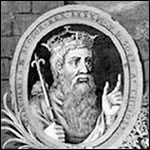
Malcolm III Canmore (Pictorial History of Scotland)
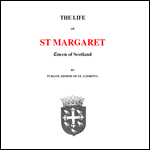
The Life of St. Margaret
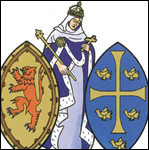
St. Margaret, Queen of Scotland: family history & links with Europe

Queen and Saint Margaret
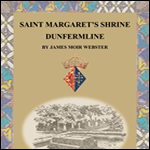
St. Margaret's Shrine - by James Moir Webster
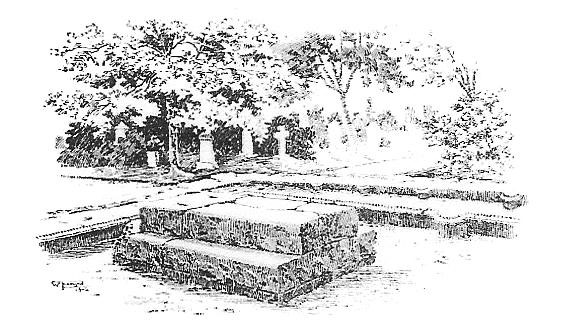
St. Margaret's Shrine

Saint Margaret's Cave

St. Margaret's Stone

St. Margaret's Well

St.Margaret

The Margaret Books
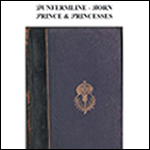
Dunfermline-born Princes & Princesses
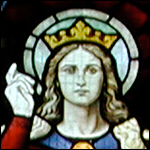
Place of Pilgrimage
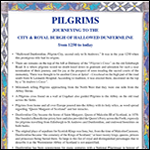
Genealogy of Bondsmen
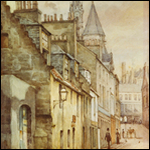
St. Leonard's Leper Hospital
Historic Dunfermline – Scotland’s Ancient Capital
Published by Graeme on November 23, 2021 November 23, 2021
It’s such a historic place but Dunfermline gets a bit of a hard time. You won’t find hordes of tourists visiting and usually only people with a personal connection will add this to their Scotland itinerary. The Kingdom of Fife is dotted with beautiful, little villages that have barely changed for hundreds of years but that’s not Dunfermline. This is a modern town, better known for its large housing estates and an Amazon depot. So why do I think it’s so great?
There are plenty of reasons to visit historic Dunfermline and you don’t need to comb the town to find them. Packed into the very centre, a short walk from the train station, you’ll find all the signs that this was once the Royal Capital of Scotland.
Never miss a story! Sign up to the Scotland’s Stories Newsletter here.
Check your inbox or spam folder to confirm your subscription.
A Brief Early History of Dunfermline
There have been settlements around Dunfermline for thousands of years, but written records go back to the 11 th century. The name probably means Fort of the Crooked Water referring to the old castle that sat high above the gorge of Pittencrieff Glen. It was King Malcolm Canmore who made the town his royal centre before the idea of Scotland having a fixed capital city really existed.

Later monarchs preferred different towns with eventually Edinburgh taking over for good. That didn’t mean Dunfermline was ignored entirely. The last monarch to be born in Scotland was at Dunfermline Palace in 1600, the rather unfortunate Charles I. The town started to decline after the royal family moved down to London and in 1624 a fire destroyed most of the historic buildings.
Dunfermline Abbey
The most obvious reason for visiting Dunfermline is the Abbey. This fascinating building is actually two churches joined back to back, the old Medieval Abbey and a newer Parish Church still in use. It might not be as well known as other abbeys around the country, but this is the final resting place of at least a dozen Kings and Queens of Scots. It even has its own royal love story.

When an English-Hungarian Princess called Margaret landed on the shores of Fife by accident, it didn’t take long for King Malcolm to fall madly in love with her. The two were married at Dunfermline in 1070 and the new Queen marked the occasion by founding a much larger church here. This is where she chose to be buried in 1093 and eventually her remains would become a popular shrine.
Margaret’s youngest son King David I raised the profile of the church at Dunfermline to a fully-fledged Abbey and over the years her sons, their Queens and other monarchs would choose this royal centre as their final resting place. As with most Catholic Abbeys, the Scottish Reformation caused serious damage to Dunfermline Abbey. At least it has been restored to a good shape rather than left to ruin like many others.

The Abbey is run by Historic Scotland so you can visit and have a look around the interior. Be prepared for a real contrast inside. Firstly, the Medieval section is pretty much blank, just an enormous room with nice stained glass but very little information. The modern church on the other hand just looks almost like a regular Church of Scotland apart from one rather special difference.
King Robert the Bruce’s Tomb
If you didn’t notice the words around the top of the church – “KING ROBERT THE BRUCE” then you might also miss his burial inside. The King had been lost for years but during restoration works, a body was discovered amidst a crumbling tomb. It was the right size and age for Bruce and even the heart had been cut out, so the details all matched up. He was reburied under the floor of the new church but unfortunately not before people pilfered bits and pieces of the King’s bones.

Robert the Bruce’s burial at this particular Abbey is much more significant than you might think. Not just because of how historic Dunfermline was but because it underlined a niggling problem with the warrior King’s reign.
While Bruce had a very legitimate claim to the throne as a descendant of King David I, he had still taken it by force. Ever since he murdered John Comyn in Dumfries, he was desperate to ensure everybody saw him as a legitimate King. That meant his coronation had to be at Scone and the crown needed placed on his head by a MacDuff for tradition’s sake. When it came to his burial, he would have planned it in the same calculating way.

Bruce was particularly interested in Queen Margaret, leaving her chapel standing at Edinburgh Castle when the rest was destroyed. Not only was she Scotland’s only Royal Saint but he was her direct descendant. What better place to underline he was the rightful monarch than to be buried amongst Margaret, David and a host of other Scottish monarchs?
Dunfermline Palace
After Malcolm and Margaret had established Dunfermline as their power base, the town prospered from it. Cold, draughty castles weren’t the most enjoyable places to live though and so future Royals looked for a more comfortable life. Just like Holyrood in Edinburgh, monarchs preferred to spend the night at apartments inside the Abbey. Over time those apartments grew into Dunfermline Palace.
Dunfermline Palace was a welcome escape from crowded Edinburgh and often a stopover on the way to the more popular residence at Falkland. When James VI married Anne of Denmark, he rebuilt the rundown palace here and gifted it to his new Queen. She loved it and this is where the future King Charles I was born and initially raised.

Charles met a rather unfortunate end and if the following story is true then he never really had a chance. He was a sickly child and the sound of his crying often rang around the palace walls. One night, his father was trying to read when he was interrupted once again by the sound of crying. King James stormed towards the sound but was surprised to find it was his son’s nurse screaming rather than Charles himself.
After he calmed the nurse down, she said that a figure like an old man had crept inside. He threw his cloak around the cradle and started to drag it towards the door. That was the point she started screaming and the figure vanished into thin air!

James declared that he wished the baby had just been taken. Not only was he a sickly child but now “The Devil has cast his cloak over him”. Surely nothing good would come from his reign as King.
Devil or not, James was right and Charles I had a tumultuous reign both in Scotland and England. He faced religious strife, civil war and eventually lost his head to the blade of an executioner. Dunfermline Palace was only briefly used by Charles II and that was the building’s final chapter.
St Margaret’s Cave
The holiest of all Scotland’s Queens, Margaret fed orphans, washed the feet of pilgrims and even sponsored a ferry to help them travel to Dunfermline and on to St Andrews. If you’ve ever wondered about the name Queensferry then this is the lady to thank. It’s no surprise that she was canonised in 1250.

Like the hermit saints of old, Queen Margaret liked nothing more than praying in a little cave. It might be hard to imagine this historic part of Dunfermline 950 years ago but it would have been a leafy glen, just a short walk from the castle. When the council decided to build a car park right here, the locals were in uproar. The compromise came with this little entrance masking a deep tunnel that drops right down to St Margaret’s Cave.

Unfortunately, the cave has been closed due to Covid but hopefully it will reopen for next year !
Malcolm Canmore’s Tower
All that remains of Malcolm Canmore’s Tower and the very centre of historic Dunfermline is this pile of rubble.
Unfortunately, so much of the stonework has been removed that dating the castle is impossible. We do have some clues though. The tower is a short walk from the Abbey, at the top of a steep gorge high above the winding river. It’s the obvious place for King Malcolm to have built the castle that he and Margaret shared.
Malcolm was the first of the House of Dunkeld and one of Scotland’s most memorable Kings. Depending on your translation, Canmore means either Great Chief or Big Head but he is a slightly contentious figure.

As King he secured the country from relentless Viking pressure in the north and guided it through a dangerous time with William the Conqueror wreaking havoc down south. To reign for 35 years in a time like this was an impressive feat. On the other hand, his reign saw the start of a move away from some Gaelic traditions in the Scottish court. The Scots language started to take root in the Lowlands, separating it from Gaelic in the Highlands.
His marriage to Margaret and time he spent exiled in England as a youth no doubt had a large impact on Malcolm. It’s not quite as simple as that though. The wider European stage was changing and Scotland needed to secure its place there.
Pittencrieff Park
Once you’ve passed the ruins of the tower, you’re now into the leafy gorge of Pittencrieff Park. It’s a bit of a maze, filled with interesting little spots like a beautiful double bridge. Eventually, as you wind around you should stumble upon a sign for Wallace’s Well. There is a tradition, although without much to back it up, that William Wallace hid around Dunfermline after his loss at the Battle of Falkirk.

Wallace’s mother passed away and he wanted to bury her somewhere special. He knew that an obvious gravestone would be a target for his enemies. Instead, he buried her in Dunfermline Abbey grounds marking the spot with a thorn tree. It’s a local legend and that tree has had to be replaced but people still leave little mementos in honour of Wallace’s mum.

Andrew Carnegie
Andrew Carnegie has a rather interesting link to Pitencrieff Park. When this wee glen and Dunfermline Abbey were still part of a private estate, Carnegie’s grandfather Thomas Morrison campaigned for public access. The man who owned the grounds wasn’t happy about Morrison’s attempts. He was eventually persuaded by the courts to open the gates for a single day each year. The owner had one condition though.
Nobody related to Morrison was to be admitted. Eventually, when Carnegie was rich enough to buy Pitencrieff Park, he gifted it to the people of Dunfermline. Nobody would ever be excluded again.

Once the richest man in the world, Carnegie rose to the very top from humble beginnings. The cottage where he grew up is now run as the Andrew Carnegie Birthplace Museum . Importantly, it doesn’t just cover how much money the man made and the philanthropic acts he carried out in later life. The less attractive side is also explored, giving a balanced story. Such as how some of Carnegie’s employment practices impacted those at the bottom rung of the ladder.
I think Carnegie would be disappointed by how little attention Dunfermline receives today. But then you’ve read this far so hopefully that’s one more person convinced to visit.
If you’re planning on visiting Dunfermline then why not have a look at some other Hidden Sites in Fife?
Share the story using the links below!

Want To See More of Scotland?
Sign up to get blog updates! No spam. Ever.
Writer and Storyteller
10 Comments
Joyce Fox · November 24, 2021 at 1:19 pm
That was a very interesting, informative read. I’ll now add that to places to visit list
Graeme · November 30, 2021 at 9:19 pm
Excellent. Glad I managed to xonvince you!
Kirsty · December 4, 2021 at 6:43 pm
As someone born in Fife, this was so informative and interesting. Thank you. I shared it with my Canadian partner who I would love to take back there soon.
Graeme · December 4, 2021 at 7:09 pm
Glad you enjoyed it!
Wendy S. · November 24, 2021 at 9:15 pm
This particular ‘blog’ is SO full of information , I had to read it twice just to make sure I didn’t miss anything … the rich history surrounding Dunfermline is not very well known – sadly …Queen Margaret , Robert the Bruce and much , much more … this is possibly one of your best Graeme … defo accolades for this one !!!❤️🏴 …
Graeme · November 30, 2021 at 9:28 pm
There’s so many interesting things here that I’m not surprised you had to read it again! More people need to add Dunfermline to their travel plans!
Maureen Kimmitt · November 25, 2021 at 1:50 am
I love reading the history of different places in Scotland and this was extremely interesting and informative. I’ve signed up for your newsletter and look forward to reading more about Scotland. We found out we are part of the Clan Fraser, and I’m very interested in Scotland and Ireland, which we also have in our ancestry. I’d love to travel to both places.
Graeme · November 30, 2021 at 9:38 pm
Brilliant! You’ve come to the right place then I hope. Hopefully you’ll be able to visit both Scotland and Ireland some day soon!
Rena · November 25, 2021 at 6:15 pm
I agree that Dunfermline doesn’t get the recognition it should. My happiest childhood days were spent in The Glen as we knew Pittencrieff Park. The paddling pool, the bands each weekend, the peacocks and the little museum in the park. Last time I was in Dunfermline I was disappointed to find the building closed! I loved the gardens and wandered into the hothouse many times. Loved the memories of the city, Andrew Carnegie, and walking a neighbour’s dog,Juno, most days through the Glenn. Who can forget the Gala every year. Just as an extra piece on Carnegie, he started in the small cottage but finished up in a big mansion alongside another famous par, Central Park in New York. Hi was truly a Rags to Riches life. At the entrance to the park from the Main Street I remember people celebrating outside the main gates with so much happiness, music and dancing. I lived with my aunt on Grieve St. I loved the city and took my children to visit one of my happy places in life. Thanks whoever posted this information, all the way from Canada now. 🇨🇦🇨🇦🇨🇦🇨🇦
Graeme · November 30, 2021 at 9:40 pm
What an idyllic childhood! The Glen is so very underrated, how many other towns have something like that? Glad you enjoyed the article and hopefully you’ll be back for a visit soon! 🏴💙🇨🇦
Leave a Reply Cancel reply

Your email address will not be published. Required fields are marked *
Save my name, email, and website in this browser for the next time I comment.
Related Posts

Exploring The Amazing South of Scotland With Literary Tourism
When it comes to stories, the South of Scotland is full of them. Even better than that, this region of rolling hills and Border Ballads has plenty of storytellers as well. The storytelling tradition is Read more…

How To Spend The Perfect Day In St Andrews
It’s one of the best known towns in Scotland, famous for old courses and an even older cathedral. There’s more to the perfect day in St Andrews than just a round of golf or a Read more…

What is Scottish Food?
If you’re planning a trip to Scotland then you’re probably wondering to yourself what is Scottish food? When I’m travelling abroad, the first thing I look up is what to eat when I get there. Read more…

IMAGES
COMMENTS
The royal couple met members of the public outside the abbey They spent about 20 minutes in the abbey, then walked down the steps to St Catherine's Wynd and met members of the public. King Charles ...
Dunfermline's bid for city status was based on its heritage and its historic status as an ancient seat of royal power but it is also one of the fastest growing towns in Europe. Dunfermline was established as the new seat of power in 1057 by King Malcolm III, who married Margaret of Wessex. It was Margaret of Wessex who brought the Benedictine ...
No-one could argue with Dunfermline's claim to royal fame. The new city in Fife was first recorded in the 11th Century, with the marriage of Malcolm III, King of Scots, and Margaret of Wessex ...
The King and his Queen Consort will visit Dunfermline next week in their first joint public engagements since the period of royal mourning ended. Charles and Camilla will attend an official ...
The Royal visitors will pay a visit to Dunfermline City Chambers, where King Charles will confer City status on Dunfermline as part of The Queen's Platinum Jubilee celebrations. Following the ceremony in the City Chambers, Their Majesties will take a short walk to Dunfermline Abbey, which is celebrating its 950th anniversary, where they will ...
DUNFERMLINE ABBEY will welcome a royal visitor today (Wednesday) to mark its 950th anniversary. The Princess Royal is to visit the city landmark for the event, with more than 300 representatives from the community, churches, ecumenical partners, and heritage organisations also invited to attend. A new piece of music was even commissioned for ...
The visit, which is the first official engagement of Their Majesties since the end of formal royal mourning for her late Majesty Queen Elizabeth II, will see King Charles confer City status on Dunfermline as part of The Queen's Platinum Jubilee celebrations. Read more: King Charles and Queen Consort to visit Dunfermline
After the ceremony, they will visit Dunfermline Abbey to mark its 950th anniversary, and will meet with representatives from Historic Scotland to learn about the history of the local area and conservation of the site. ... "For a place with such rich royal history, it is fitting that Dunfermline is becoming a city as we celebrate our longest ...
It's the final resting place of King Robert the Bruce along with seven other Scottish kings and queens and is a fascinating visit. Discover the remains of the refectory, dormitory range, latrines, gatehouse, kitchen and royal palace. Dunfermline Abbey, St Margaret's Street, Dunfermline, KY12 7PE. Visit Website View Location.
'ROYAL LIVE: King Charles III Visits Dunfermline to Celebrate City Status'King Charles will make his first public appearance today after his official mournin...
The King and The Queen carried out their first joint engagement today, since royal mourning for the late Queen Elizabeth II ended on 26th September. The late Queen passed away on 8th September. The royal couple visited Dunfermline, where they formally marked the town becoming a city.
Dunfermline. KY12 7PE. Scotland. Tel: +44 (0)1383 723005. Email us at [email protected]. The tomb of King Robert the Bruce and many other royal and historical associations attracts tens of thousands of visitors each year. Many more join us for worship at our Sunday services, or midweek prayers.
Dunfermline and West Fife - Our Story, yours to explore. The City of Dunfermline - the Ancient Capital of Scotland, once seat of royal power and burial place of Kings and Queens. It was granted official city status as part of the platinum jubilee celebrations for Queen Elizabeth II in 2022. Situated just 30 minutes from Edinburgh, it ...
The Highlights. 1: Dunfermline Abbey holds immense historical significance as the resting place of many Scottish monarchs, including Robert the Bruce. Visitors can explore the majestic royal tombs and gain insights into the lives and legacies of these influential figures. 2: The abbey's architecture is a sight to behold. From the intricate stone carvings to the soaring Gothic arches, every ...
Plan your visit. More than 20 of our sites are now open. Please book your tickets in advance. Become a member. Join Historic Scotland to visit our properties free of charge for a full year and support our work at the same time. Hire a site for filming. Use one of our fantastic locations on your next shoot for an awe-inspiring backdrop to your work.
Royal Visit HRH Princess Margaret. Royal Visit of Princess Anne. Spirit in the Stones. ... and on Malcolm III making his home and the Church in Dunfermline in the east, The 'Royal Sepulture for Scotland' where he and his Queen and Saint Margaret IN 1093 along with at least twenty one of Scotland's Royals from his time, continued to be buried in ...
Dunfermline Palace became the personal residence of James VI's queen, Anna of Denmark. The future Charles I was born here in 1600, the last monarch to be born in Scotland. Royal interest in Dunfermline waned when James and Anna left for London in 1603, and the palace fell into disrepair. Read about the history of Dunfermline Abbey, where ...
Founded as a priory, Dunfermline was made an abbey by David I and later became a royal mausoleum. Following the Protestant Reformation of 1560, Queen Anna of Denmark created an imposing palace with the monastic guesthouse at its heart. Charles I was delivered here in 1600 - the last monarch to be born in Scotland.
Dunfermline Abbey is a must-see piece of history you can't afford to miss on any trip to Scotland. Read this guide to find out more about this iconic location. ... Visit the Royal Graveyard. The abbey is the final resting place for many a Scottish monarch - 18 royals and 7 kings were buried beneath its soils between 1093 and 1420. Its status ...
Stained Glass Windows in Dunfermline Abbey. The Royal Tombs. The Stranger's Companion amid the Antiquities of Dunfermline. Dunfermline Royal Sepulture. This page includes: ... Royal Visit HRH Princess Margaret. Royal Visit of Princess Anne. Spirit in the Stones. The Reopening of Abbot House.
The last monarch to be born in Scotland was at Dunfermline Palace in 1600, the rather unfortunate Charles I. The town started to decline after the royal family moved down to London and in 1624 a fire destroyed most of the historic buildings. Dunfermline Abbey. The most obvious reason for visiting Dunfermline is the Abbey.
Visit the War Memorial and remember the 610 local men and women of the City and Royal Burgh of Dunfermline who died for their country in the First World War (1914-1918). Next to the memorial you'll find the beautiful Garden for Heroes where you can take a moment for contemplation. Monastery Street, Dunfermline, KY12 7PQ. Visit Website View ...